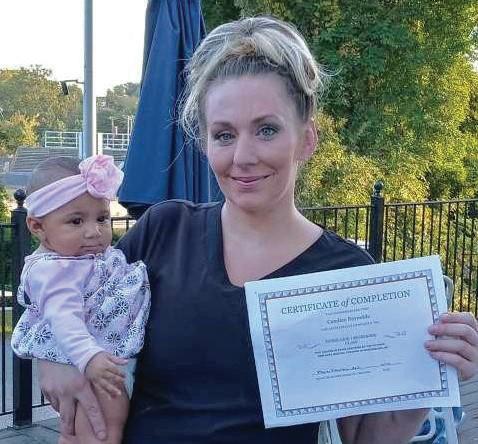
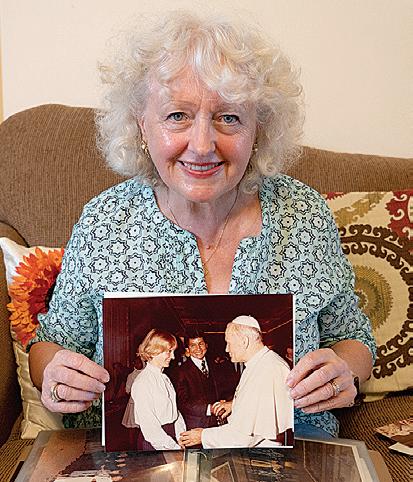




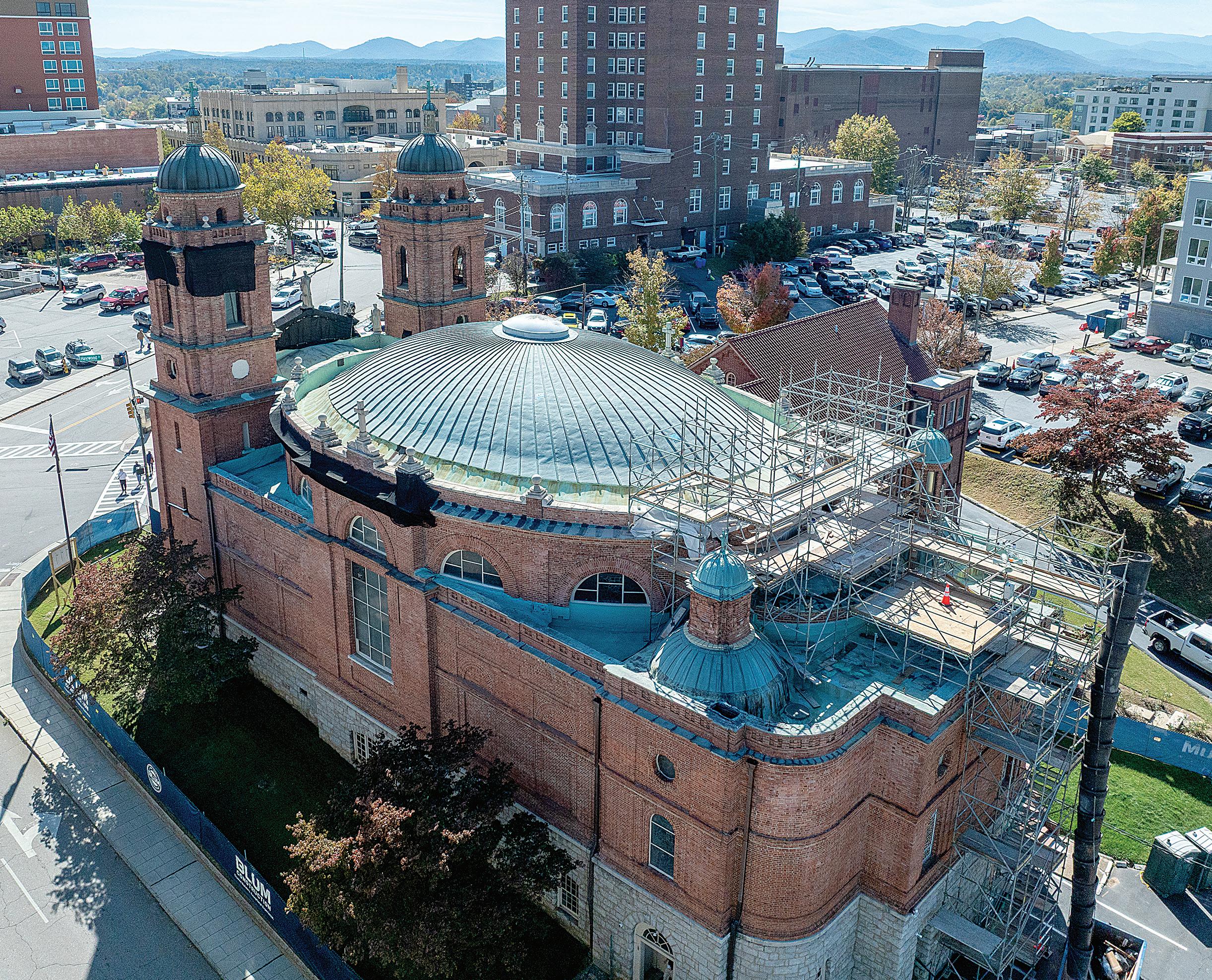
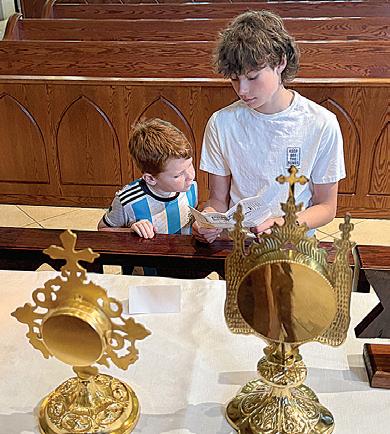













OCTOBER 24, 2025
VOLUME 35 • NUMBER 2
1123 S. CHURCH ST.
CHARLOTTE, N.C. 28203-4003 catholicnews@rcdoc.org
704-370-3333
PUBLISHER
The Most Reverend
Michael T. Martin, OFM Conv., Bishop of Charlotte
Arts & Entertainment 9
Contact us 2
Español 12-14
Our Diocese 4-7, 10
Our Faith 3
Our Schools 8 Scripture 3, 14
U.S. news 15
Viewpoints 18-19 World news 16-17
EDITOR: Trish Stukbauer
704-370-3392, tmstukbauer@rcdoc.org
ADVERTISING MANAGER: Kevin Eagan
704-370-3332, keeagan@rcdoc.org
MULTIMEDIA DESIGNER: David Puckett 704-808-4521, dwpuckett@rcdoc.org
EDITORIAL TEAM: Kimberly Bender
704-370-3394, kdbender@rcdoc.org Lisa Geraci 704-370-3294, lmgeraci@rcdoc.org Troy C. Hull 704-370-3288, tchull@rcdoc.org Christina Lee Knauss 704-370-0783, clknauss@rcdoc.org Brian Segovia 704-370-3235, bmsegovia@rcdoc.org


COMMUNICATIONS ASSISTANT/CIRCULATION: Amelia Kudela 704-370-3333, catholicnews@rcdoc.org
COMMUNICATIONS DIRECTOR: Liz Chandler 704-370-3336, lchandler@rcdoc.org
ASSISTANT COMMUNICATIONS DIRECTOR: Patricia L. Guilfoyle 704-370-3334, plguilfoyle@rcdoc.org
THE CATHOLIC NEWS HERALD is published by the Roman Catholic Diocese of Charlotte 26 times a year.
NEWS: The Catholic News Herald welcomes your news and photos. Please e-mail information, attaching photos in JPG format with a recommended resolution of 150 dpi or higher, to catholicnews@rcdoc.org All submitted items become the property of the Catholic News Herald and are subject to reuse, in whole or in part, in print, electronic formats and archives.
ADVERTISING: Reach 165,000 Catholics across western North Carolina! For advertising rates and information, contact Advertising Manager Kevin Eagan at 704-370-3332 or keeagan@rcdoc.org. The Catholic News Herald reserves the right to reject or cancel advertising for any reason, and does not recommend or guarantee any product, service or benefit claimed by our advertisers.
SUBSCRIPTIONS: $17.25 per year for registered families of the Diocese of Charlotte and $25 per year for all others
POSTMASTER: Periodicals Class postage (USPC 007-393) paid at Charlotte, N.C. Send address corrections to the Catholic News Herald, 1123 S. Church St., Charlotte, N.C. 28203.
he end of October brings longer nights, cooler temperatures and Hallowtide – a three-day observance dedicated to remembering the dead, including saints, martyrs and all the faithful departed. The “triduum” of feast days begins Oct. 31 with All Hallows’ Eve (also called All Saints’ Eve, Day of the Dead and, of course, Halloween) and also includes All Saints Day Nov. 1 and All Souls’ Day Nov. 2. There are several sweet ways to celebrate this season.
INDULGE ON ALL HALLOWS’ EVE
The name Hallows’ Eve comes from the Old English “hallowed,” meaning holy or sanctified – now shortened to the familiar word “Hallowe’en.” In the early Church, communities gathered to celebrate Mass and pray for the intercession of saints and for deceased loved ones. While the celebration has evolved to a more secular day of pumpkin carving, trick-or-treating, costumes and treats, you can still indulge while taking time to go to Mass, pray for the departed, or spend time with holy relics of the saints. (See page 4 for more on relics at St. Mark Church.) You can also enjoy sweet treats like chocolate covered pretzels, whose twisted shape originally represented arms crossed in prayer.
On All Saints Day, we pray to the saints, known and unknown, that they continue to help and guide us along our path to salvation. One tradition associated with the feast day is going to Mass, and it is typically a holy day of obligation (but not in 2025 in the United States, since it falls on a Saturday).
Other traditions include reading and learning about the saints, saying special prayers to the saints, and asking for their intercession so that we, too, might become saints. Either on Oct. 31 or Nov. 1, it is also tradition for children to dress up in costumes of their favorite saints.
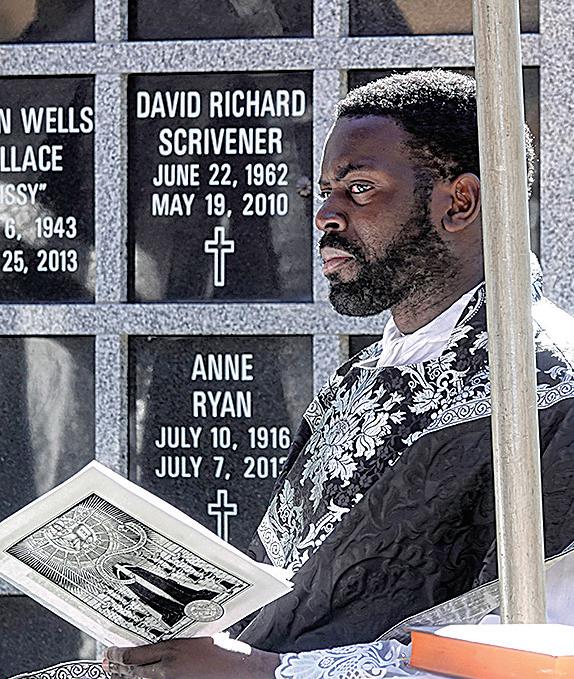

PRAY ON ALL SOULS’ DAY
All Souls’ Day (Nov. 2), is a time to pray for the souls in purgatory and make special sacrifices or give something up on their behalf. You can also visit cemeteries to pray for the dead, lighting candles (if permitted) or bringing flowers to graves. There is an indulgence for those who visit a cemetery and offer certain prayers on this day. Consider praying not just for your family members and friends, but for those who have no one to pray for them.
— Catholic News Herald and the Catholic Encyclopedia, photos courtesy of iStock and Amy Burger

Scan the QR code for this week’s recommended prayers and activities
VIÑEDO DE RAQUEL: Sanando Heridas del Aborto. Un retiro de fin de semana se ofrecerá del 5 al 7 de diciembre. Viñedo de Raquel es un retiro confidencial de fin de semana para hombres y mujeres que buscan apoyo y sanación de un aborto pasado. Para más información llamar a Lorena Haynes (828) 585-0483.
PRAYER SERVICES
VIGIL OF THE TWO HEARTS: Vigil begins with 8 p.m. First Friday Mass on Nov. 7, followed by nocturnal Eucharistic Adoration, and concludes with 8 a.m. First Saturday Mass on Nov. 8. St. Patrick Cathedral, 1621 Dilworth Road East, Charlotte. Sign up for an hour of Adoration at www.defendthefamily.org/two-hearts. TALKS
‘NO MERCY – THE REALITIES OF EUTHANASIA IN THE USA’: 7 p.m. Tuesday, Oct. 28, St. Leo the Great Church, Bishop Begley Parish Center, 335 Springdale Ave., Winston-Salem. Talk by Sister Deirdre Byrne, a surgeon, retired U.S. Army colonel and professed with the Little Workers of the Sacred Hearts of Jesus and Mary.
NEXT GENERATION LEADERS WEBINAR : “A Discussion About Understanding, Encouraging, and Uplifting the Next Generation of Black Catholic Ministry Leaders” with nationally known figures at 8 p.m. Thursday, Nov. 13. Register at www.KOFPC.org/1113.

OCT. 25 – 11 A.M.
85th Parish
Anniversary Mass St. Benedict the Moor Church, Winston-Salem
OCT. 25 – 6:30 P.M.
MiraVia Banquet Charlotte Convention Center, Charlotte
Bishop Michael Martin, OFM Conv., will participate in the following events over the coming weeks:
OCT. 26 – 3 P.M.
OCT. 27 – 6:30 P.M. Confirmation St. Eugene Church, Asheville
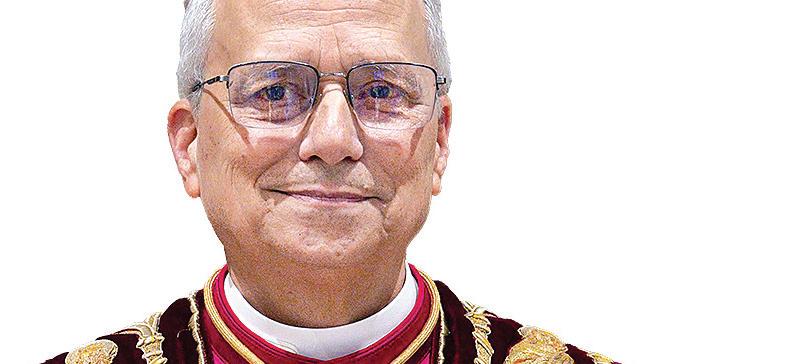
The joy of Christ’s resurrection can repair the widespread sadness and malaise in today’s world, Pope Leo XIV said.
“On the paths of the heart, the Risen One walks with us and for us,” the pope said Oct. 22 during his weekly general audience in St. Peter’s Square.
“It is the Risen One who radically changes our perspective, instilling hope that fills the void of sadness,” he said.
“Intrusive and widespread, sadness accompanies the days of many people,” he said. “Sadness robs life of meaning and vigor, turning it into a directionless and meaningless journey.”
A similar scenario can be seen in the Gospel of Luke’s account of the two disciples on the road to Emmaus, he said. “Disappointed and discouraged, they leave Jerusalem, leaving behind the hopes they held in Jesus, who has been crucified and entombed.”
However, they met a stranger along the road who listened to them, “allowing them to unburden their disappointment,” the pope said. A bit of hope is rekindled in their hearts when the stranger rebukes them for being slow to believe everything that the prophets have declared, “that Christ had to suffer, die and rise again.”
It is only after they sit down and break bread with the “mysterious traveling companion” that the disciples recognize him as Jesus, and He immediately disappears from their view, he said.
“Everything becomes clear: the shared journey, the tender and powerful word, the light of truth,” Pope Leo said. “Immediately, joy is rekindled, energy flows back into their weary limbs, and gratitude returns to their memory.”
Their souls are filled “with an unexpected and joyful realization: Christ is truly risen!” he said in English. “The Lord wishes to do the same for us, by dispelling any sadness and desperation that we may be feeling.”
“The Lord has truly been raised,” in deeds, not words, “with His body bearing the marks of His passion, a perennial seal of His love for us,” the pope said. “The victory of life is not an empty word, but a real, tangible fact.”
“May the unexpected joy of the disciples of Emmaus be a gentle reminder to us when the going gets tough,” he said. “It is the Risen One who radically changes our perspective, instilling hope that fills the void of sadness.”
Despite the darkness of His passion, “He bears witness to the defeat of death and affirms the victory of life,” he said. “History still has much goodness to hope for.”
The traditional Mexican holiday Dia de los Muertos – or Day of the Dead – has gone mainstream in American pop culture, with its colorfully decorated skulls and flowers adorning clothing, featured in advertising and embraced by organizations from Hollywood to major league sports. But beyond its commercial appeal, the Day of the Dead has deep roots in Hispanic culture and Catholicism.
The celebration coincides with the feasts of All Saints Day and All Souls’ Day, celebrated over two to three days, usually beginning Oct. 31 and ending Nov. 2. Despite its bleak name, the Day of the Dead is not a time for mourning or for scaring friends and neighbors. It is a celebration of life – a time to honor the memory of deceased loved ones, to pray for the souls in purgatory and to ask intercession from those in heaven.
“Death … is something that comes and is certain for everyone. Instead of being frightened by it, (Catholics) see it as something natural, as a step toward heaven,” Father Julio Dominguez, the diocese’s former vicar of Hispanic Ministry, told the Catholic News Herald in a 2022 interview.
WHAT IS THE DAY OF THE DEAD?
The Day of the Dead is a day when families gather to pray and remember their deceased loved ones. They may visit their family members’ gravesites, spending time in prayer and beautifying the resting places with candles, flowers and personal memorabilia. They also may bring a meal that includes the deceased’s favorite foods.
It is tradition to attend Mass, and families also create altars in their homes to remember and pray for the deceased. Adorned with candles, flowers, photos and mementos, the home altar is the centerpiece of the celebration.

“The feast and the altar of the deceased have nothing sacrilegious or satanic about them,” said Father Dominguez, adding that
OCT. 26-NOV. 1
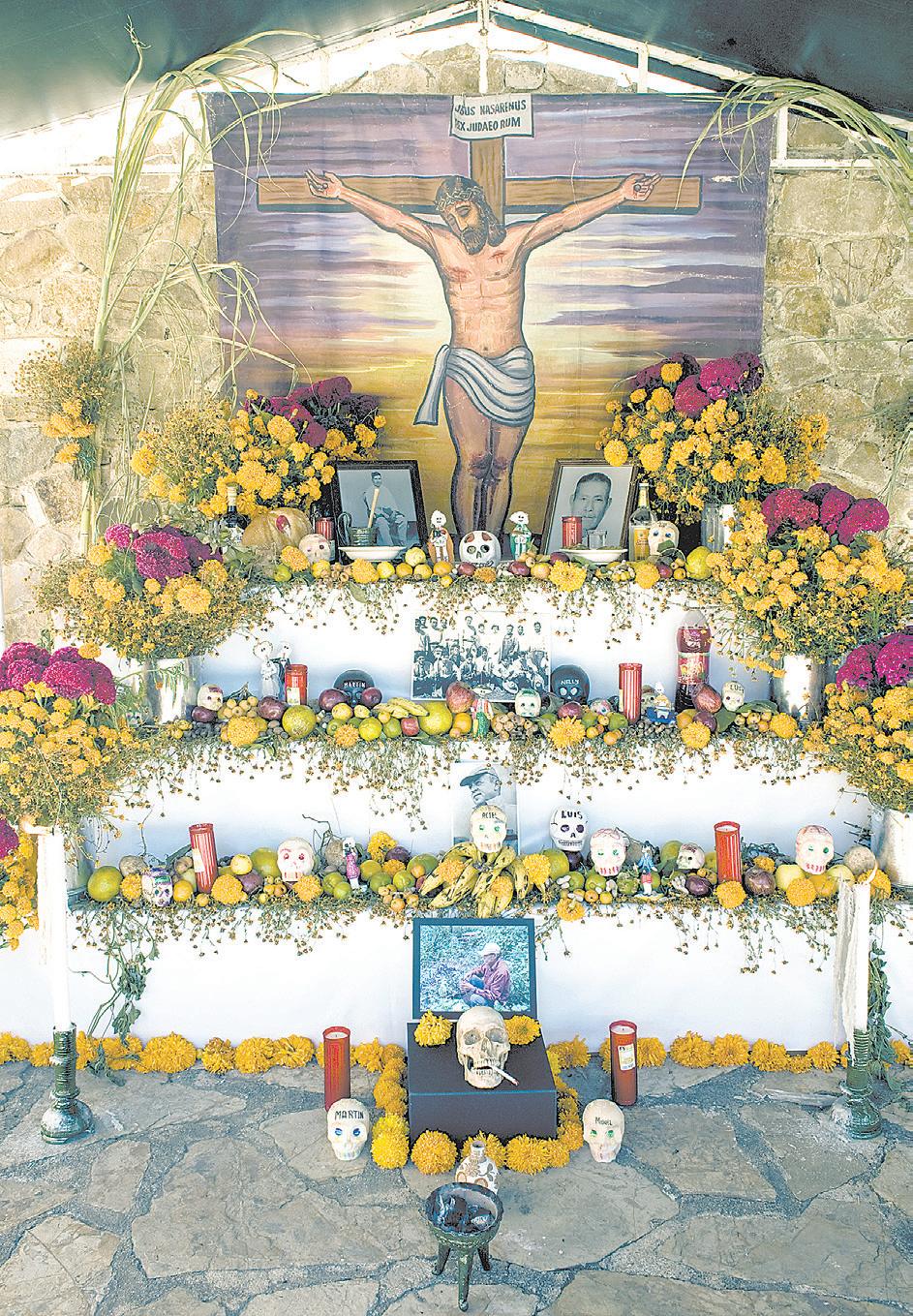
The Day of the Dead is a Mexican Catholic celebration that honors one’s deceased family and friends and reminds us to pray for the dead – a spiritual work of mercy. Although often confused with Halloween, the days are not related.
the skulls popularly depicted in Day of the Dead artwork acknowledge our mortality and remind us to aspire for eternal life in heaven.
On Day of the Dead home altars, Father Dominguez said, “Christ is placed on high, remembering that He is our King, and we were redeemed by Him. It is followed by images of saints, and then come
the photographs of our deceased relatives, for whom we pray that they will win heaven.”
Food placed on the home altar or offered in visits to cemeteries is a custom grounded in Mexican culture, as other cultures use flowers as a sign of honor and remembrance.
IT IS NOT HALLOWEEN!
The Day of the Dead is often conflated with Halloween, but it is not connected.
Halloween is traditionally a solemn Christian feast day that dates as far back as the 8th century.
The feast day served as a vigil in which children went house to house asking for “soul cakes” to commemorate the faithful departed. The name comes from an old Scottish term meaning “All Hallows’ Eve,” or “All Holy Night,” the vigil of the Solemnity of All Saints on Nov. 1.
In the 20th century, however, Halloween devolved into a secular holiday. In recent years, confusion about the feast days has led to popular culture incorporating Day of the Dead decorations and symbols during Halloween.
“Halloween is another old tradition, but the Day of the Dead is completely different and has no common elements,” Father Dominguez said.
CELEBRATING THE DEARLY DEPARTED
While popular culture has distorted the feasts of All Saints Day and All Souls’ Day, the Day of the Dead is a Mexican Catholic celebration that honors one’s deceased family and friends and reminds us to pray for the dead – a spiritual work of mercy. So, whether building home altars, decorating memorials or gathering with family around the dinner table, this traditional feast is not a time of celebrating death, but a special, holy day in which we pray and remember all the deceased.
Through prayer and familial communion, we look beyond death toward life’s true purpose: eternal life with God.
— Catholic News Herald
Sunday (Thirtieth Sunday in Ordinary Time): Sir 35:12-14, 16-18, Ps 34:2-3, 17-18, 19, 23, 2 Tim 4:6-8, 16-18, Lk 18:9-14
Monday: Rom 8:12-17, Ps 68:2 and 4, 6-7ab, 20-21, Lk 13:10-17
Tuesday (Feast of Sts. Simon and Jude, Apostles): Eph 2:19-22, Ps 19:2-3, 4-5, Lk 6:12-16
Wednesday: Rom 8:26-30, Ps 13:4-5, 6, Lk 13:22-30
Thursday: Rom 8:31b-39, Ps 109:21-22, 2627, 30-31, Lk 13:31-35
Friday: Rom 9:1-5, Ps 147:12-13, 14-15, 19-20, Lk 14:1-6
Saturday (Solemnity of All Saints): Rev 7:2-4, 9-14, Ps 24:1bc-2, 3-4ab, 5-6, 1 Jn 3:1-3, Mt 5:1-12a
NOV. 2-8
Sunday (The Commemoration of All the Faithful Departed / All Souls): Wis 3:1-9, Ps 23:1-3a, 3b-4, 5, 6, Rom 5:5-11 or Rom 6:3-9, Jn 6:37-40
Monday: Rom 11:29-36, Ps 69:30-31, 33-34, 36, Lk 14:12-14
Tuesday (Memorial of St. Charles Borromeo, Bishop): Rom 12:5-16ab, Ps 131:1bcde, 2, 3, Lk 14:15-24, Wednesday: Rom 13:8-10, Ps 112:1b-2, 4-5, 9, Lk 14:25-33
Thursday: Rom 14:7-12, Ps 27:1bcde, 4, 1314, Lk 15:1-10
Friday: Rom 15:14-21, Ps 98:1, 2-3ab, 3cd-4, Lk 16:1-8
Saturday: Rom 16:3-9, 16, 22-27, Ps 145:23, 4-5, 10-11, Lk 16:9-15
NOV. 9-15
Sunday (Feast of the Dedication of the Lateran Basilica in Rome): Ez 47:1-2, 8-9, 12, Ps 46:2-3, 5-6, 8-9, 1 Cor 3:9c-11, 16-17, Jn 2:13-22
Monday (Memorial of St. Leo the Great, Pope and Doctor of the Church): Wis 1:1-7, Ps 139:1b-3, 4-6, 7-8, 9-10, Lk 17:1-6
Tuesday (Memorial of St. Martin of Tours, Bishop): Wis 2:23-3:9, Ps 34:2-3, 16-17, 18-19, Lk 17:7-10
Wednesday (Memorial of St. Josaphat, Bishop and Martyr): Wis 6:1-11, Ps 82:3-4, 6-7, Lk 17:11-19
Thursday (Memorial of St. Frances Xavier Cabrini, Virgin): Wis 7:22b-8:1, Ps 119:89, 90, 91, 130, 135, 175, Lk 17:20-25
Friday: Wis 13:1-9, Ps 19:2-3, 4-5ab, Lk 17:26-37
Saturday: Wis 18:14-16; 19:6-9, Ps 105:2-3, 36-37, 42-43, Lk 18:1-8
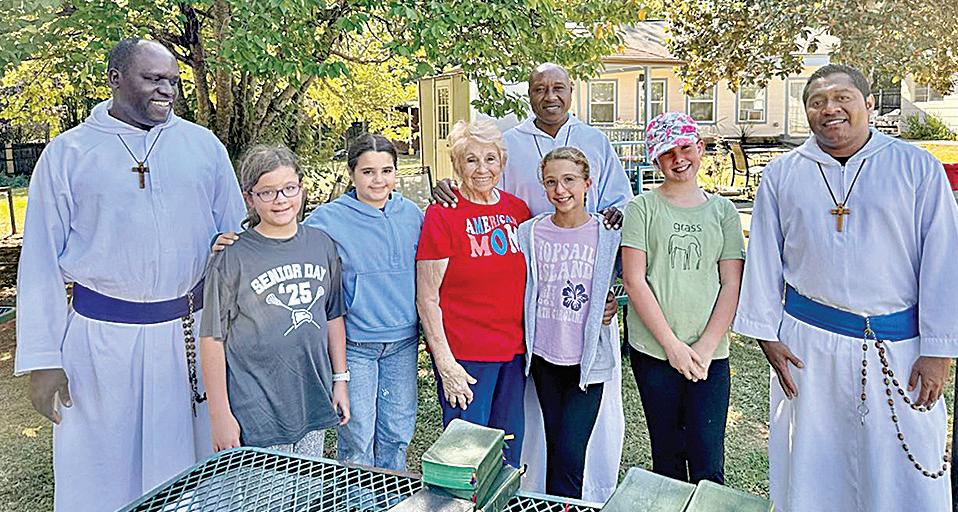
Girl Scouts hold clean-up day, complete work for Bronze Award
MONROE — On Saturday, Oct. 18, members of Girl Scout Troop 3497 from St. Matthew Church wrapped up their six-month journey toward the Girl Scout Bronze Award with a clean-up day at the Missionaries of the Poor in Monroe.
The girls learned about service, teamwork and caring for their community as they worked together on a project that will make a lasting difference. They hope to inspire others to visit and volunteer at the mission, founded by Bishop Peter Jugis and serving as the only Missionaries of the Poor site in the United States.
— Leigh Anne Baker
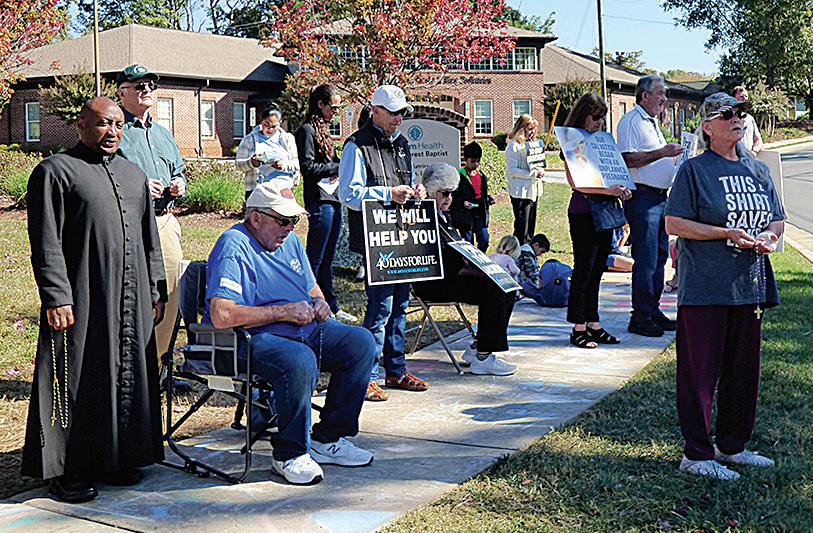
WINSTON-SALEM — More than 50 parishioners and visitors attended a special Triad-area Pro-Life Mass Oct. 18 at St. Benedict the Moor Church.
The Mass, in commemoration of Respect Life Month, was celebrated by Father Melchesideck Yumo, parochial administrator, who offered a bilingual homily on the importance of protecting the sanctity of life.
Afterward, attendees traveled to the Planned Parenthood abortion facility in WinstonSalem to peacefully pray a rosary. The Salem Pregnancy Care Center, located across the street and supported by local Catholics and other Christian communities, offered a tour of its facility and described the services they provide to mothers in need.
The event was sponsored by the Carolina Pro-Life Action Network (C-PLAN) of the Triad, a local Catholic pro-life group.
— Mike FitzGerald More online
At www.CatholicNewsHerald.com : The architect of one of the largest food banks in the diocese explains how Casa Marillac serves hundreds of families every week.
CHRISTINA LEE KNAUSS clknauss@rcdoc.org
SWANNANOA — Bells ringing from the tower at St. Margaret Mary Church ushered in the beginning of a new era for the mountain parish on Oct. 16.
Parishioners gathered for a Mass celebrated by Father John Allen, pastor, to honor the parish’s patron saint, St. Margaret Mary Alacoque, and kick off a $4.5 million capital campaign, “Bells of Hope.” When complete, the campaign will enable the parish to more than double seating capacity in the 90-year-old church and usher in other needed improvements.
“Let us pray for the many needs of our parish and pray that God guides our wonderful parish through the challenges that await us,” Father Allen said.
The campaign launch held special significance for parishioners because it came less than a month after the one-year anniversary of the devastation caused by Tropical Storm Helene.
The parish became a beacon of hope for the surrounding area for months after the storm, offering supplies and financial support for survivors. Prior to Helene, parish leadership had planned to launch the capital campaign in October 2024. Priorities shifted to Helene relief, and the campaign initiative was paused.
“We are so blessed to be called to be part of this parish at this time,” said parishioner Anne Pacosa, who serves on the campaign committee. “We’re working toward the much-needed renovation and expansion of our church to serve our community long into the future.”
Thus far, the parish has raised $296,160, with $990,000 promised in pledges. An additional $1 million is needed before breaking ground, said Claudia Graham, chief
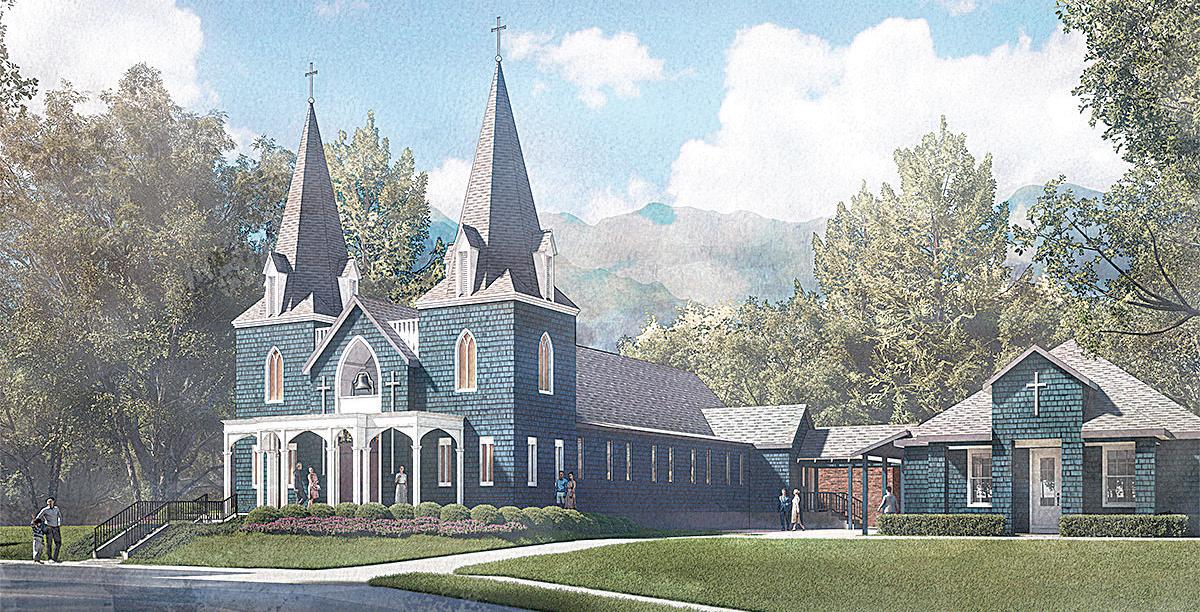
operating and financial officer for the parish.
The parish’s roots stem from 1936, when Raleigh Bishop William Hafey purchased a plot of land to build a church to accommodate the influx of northeastern Catholics who came to work at Beacon Manufacturing’s blanket mill.
The “Bells of Hope” project will be the first significant construction since the church was built, with the exception of a multi-purpose building in 1969.

At www.saintmmc.com : Learn about “Bells of Hope” or call the campaign information line at 828-747-7261. BELLS, SEE PAGE 20
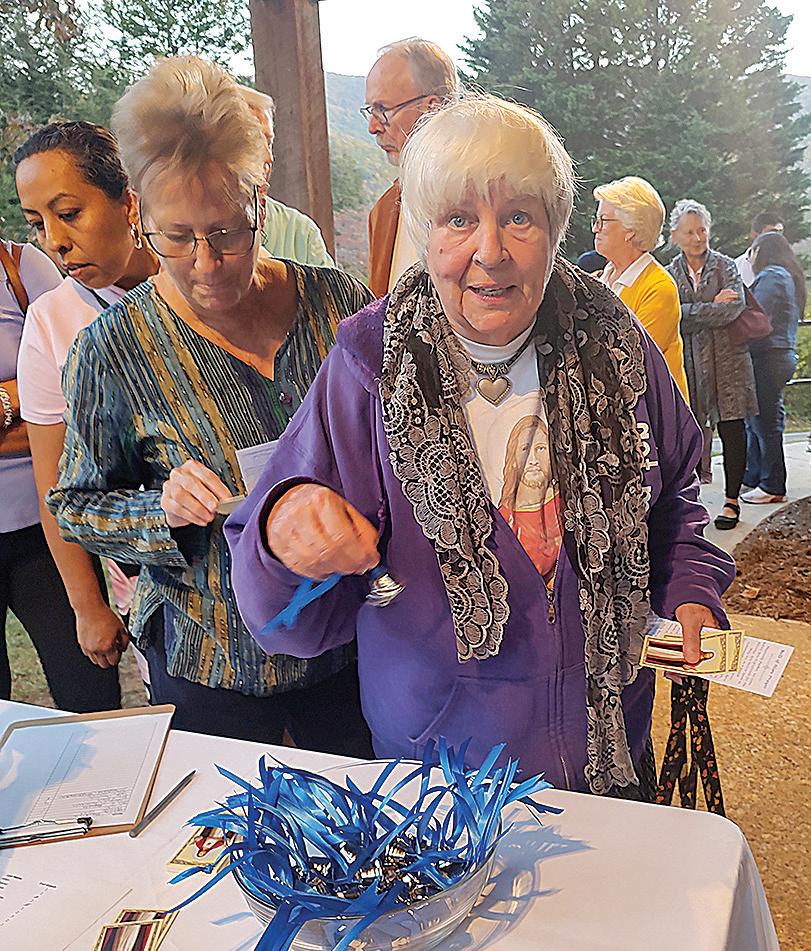
CHARLOTTE — The number of men studying for the priesthood for the Diocese of Charlotte has tripled in the past decade, creating a greater need for funding to support our 45 seminarians.
The Seminarian Education Collection, taken up in all parishes the weekend of Nov. 1-2, is one of the primary ways people can support seminarians and foster vocations to help meet the increasing need for priests to serve the growing Catholic population.
As seminarian Deacon Bryan Ilagor notes, “One cannot do this alone. Prayer and financial support are crucial, as they benefit both us and the families we serve now and in future generations to come from our ministry.”
There has been remarkable growth in the diocese: a 19% increase, from 69,000 registered households a decade ago to 82,000 in 2025. By 2030, diocesan officials project that the number of registered households will be close to 100,000. Since 2015, 34 men have been ordained to the priesthood. Meanwhile, 28 priests have retired from ministry, seven priests are serving beyond
the retirement age of 70, and within the next 10 years, another 27 priests are expected to reach retirement age.
“We are deeply blessed with the many dedicated and faith-filled seminarians who are currently discerning a vocation to the priesthood,” said Bishop Michael Martin in his letter to the faithful about the special collection. “This is both a blessing and a challenge with the need to educate, nurture and form our future priests.”
“For the past 28 years, the Seminarian Education Campaign has given faithful Catholics the opportunity to invest in the lives and ministry of our future priests,” he wrote.“Your financial gift will help prepare each of our young men to serve as priests in our diocese for an average of 40 years.”
“By contributing to the formation of our future priests,” he noted, “you are helping to ensure that the sacraments, spiritual guidance and the light of Christ continue to reach every corner of our growing diocese.”
The Seminarian Education Program supports the 23 men who are enrolled at St.
There are several ways to make a gift to fund the education of the diocese’s seminarians through the Seminarian Education Collection:
n Use the envelope provided in your parish offertory packet
n Make a gift online at your parish’s website, if available
n Make a secure gift online at www. charlottediocese.org/giving (click on Seminarian Education Campaign) More online
Joseph College Seminary in Mount Holly and 20 men who are either enrolled in major seminary at Mount St. Mary’s Seminary or in Rome. Two are in a pastoral year.
The Seminarian Education Program is primarily funded through the annual Diocesan Support Appeal, the Seminarian Education Campaign and this collection.
LISA M. GERACI lmgeraci@rcdoc.org
TREMESSEE, Haiti — Haiti’s Level 4 “do not travel” advisory did not deter clergy and parishioners from St. Matthew Church in Charlotte from visiting their beloved St. Marc Catholic School in the village of Tremessee.
St. Marc was founded in 2010 after Steve Favory and another St. Matthew parishioner, the late Mark Creasser, embarked on a mission trip and returned with a school thanks to an emotional encounter with 35 children on a hilltop.
Favory, executive director of the Ballantyne-based nonprofit Hands for Haiti, visited the school Oct. 13 to Oct. 17.
Members from Hands for Haiti, which fully funds, directs and supports the school, visit St. Marc Administrator Father Leon Sejour about five times a year to assess needs.
This time, the group that included Chairman Ernest Dwight and board member Deacon Joe Becker delivered eight new laptops to the school and a $40,000 check raised by the St. Matthew McSweeney World Hunger Drive to Missionaries of the Poor brothers to provide ongoing support for their work in one of the poorest countries in the Western Hemisphere.
The group spent mornings and nights praying, in Adoration and celebrating Mass with the brothers, and their days at St. Marc, Favory said.
This was newly installed parochial vicar Father Nicholas Kramer’s first trip to Haiti, and he saw its poverty, disease and malnutrition as well as its beauty.
“It’s a beautiful country, a lot of wonderful people. There is a lot of need, though, a lot of suffering,” said Father Kramer. He said you can see God in the smiles of the everyday people and also feel His presence “in the people that have given up their lives to the service of others and those who go out of their way to minister to those in need.”
Despite the language barrier and their two- to three-mile walk to class, the schoolchildren, with their pressed plaid uniforms and bleach-white socks, swarmed Father Kramer with high fives, hugs and laughter.
Some of the children asked if Jesus was visiting the school when they were first
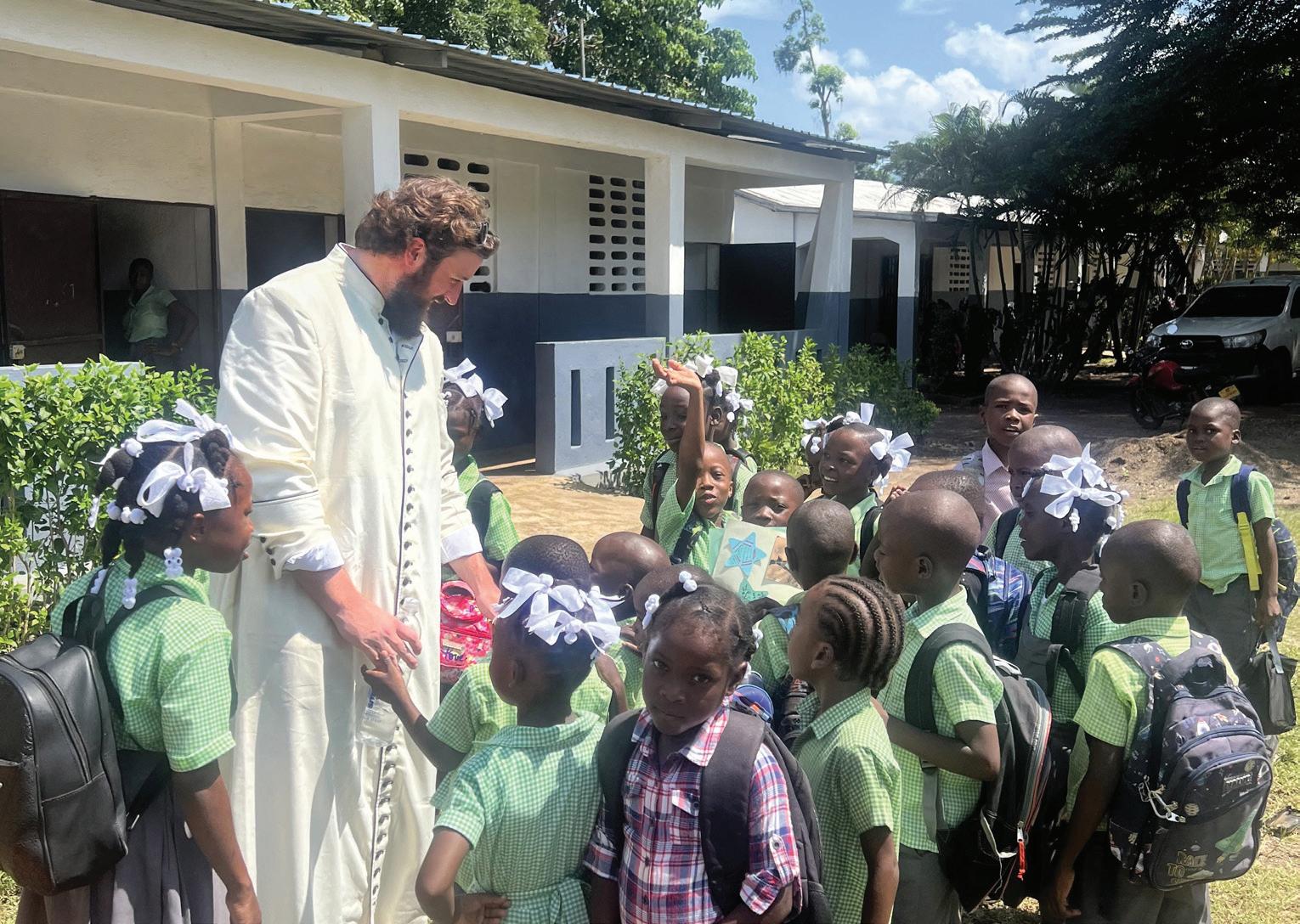
introduced to the priest with his stark white vestments and long brown hair and beard.
The school started with 35 children in a tent in 2010 and now has more than 390 students from pre-K to grade 13. The campus, led by 72 faculty, includes 10 buildings, a multipurpose center, a tilapia pond, a chicken farm and a trade school focused on agriculture and sewing.
“We grew the school one grade at a time each year, until we ran out of grades and added the trade school,” Favory said.
The group hopes its recent trip will build on that success.
They met with the vicar general and chancellor of the Archdiocese of CapHaïtien to request another priest to help Father Sejour with administrative duties, according to their report.
“Father Sejour is only but one man with many duties. He needs help,” Favory said.
If approved by the archdiocese, a priest residence and administrative building to accommodate the assistant principal will be the next focus. Other items the team
discussed were a cafeteria expansion, a teacher pay raise, chapel improvements, and the construction of a Marian grotto, Favory reported.
They met with the University Notre Dame of Haiti’s director, Father Peterson Dabel, whom they partner with, to discuss St. Marc’s agricultural program and prepared for the next harvest of corn, eggplant, spinach, pepper, plantains and okra.
Students giggled when they received posters the Vacation Bible School camps from St. Matthew designed for them and practiced their English on the visitors.
The laughter reminded Favory of how the ministry originated in 2009.
As Favory recalled, he and Creasser were walking to visit a fellow missionary when a clinic doctor asked for a small favor – to quickly visit a group of children on a hill who had been praying about their school.
They found 35 children sheltering from the sun under a large tarp. When the kids
saw the men, they started singing, but their smiles gave way to desperate tears. They needed a school, and the land where their makeshift tent campus was located was being taken, they explained.
“We saw Christ in their faces, and all we wanted to do was try to give them an opportunity,” Favory said.
An unlikely bond quickly formed, as the men, on a whim inspired by faith, gathered $4,000 and purchased the 5-acre lot that now houses St. Marc Catholic School, named after St. Mark the Evangelist, in honor of Mark Creasser.
The dividends of that investment continue to pay off in Haitian souls coming to Christ and donor hearts in Charlotte growing as quickly as the school itself. Thanks to the community of St. Marc School and the catechism classes provided by local priests, baptisms, communions and confirmations are on the rise.
“Forty-four students were first Holy Communicants last year,” Favory said.
“One thing we are most proud of is our evangelization. When Father Leon first came, maybe 5 percent of families attended Mass on a regular basis; now over 35 percent attend.”
Hands for Haiti has about 45 individual and group donors, including St. Matthew, St. Mark Parish in Huntersville and St. Therese Parish in Mooresville. Funds also are used to help the community by repairing roads, digging wells and providing needed food and medical services.
Thus far, the gang violence in the southern half of the country, marked with drug trafficking, kidnapping and roadblocks, has not engulfed Tremessee. In some ways, Favory believes the rural area is safer than during previous visits.
“The Holy Spirit keeps stepping in,” Favory said. “The fact that we are able to make an impact on these children directly is exciting. … We owe them this opportunity. This is definitely our calling.”
Get involved

At www.handsforhaiti.org : Find opportunities for your “hands” to help St. Marc Catholic School and the community of Tremessee, Haiti.
HUNTERSVILLE —Where can you venerate relics from the True Cross, St. Longinus – the Roman centurion who speared Jesus on the cross, and modern saints including St. Jacinta all in one place? While your first thought may be the Vatican, you can see these and many more much closer to home at St. Mark Church in Huntersville.
Dozens of holy relics (sacred objects associated with a saint, including physical remains or items that belonged to them) will be on exhibit at St. Mark Church as part of its annual All Saints Day Veneration of Relics, a tradition that began in 2021.
“While our secular world celebrates Halloween, the reason behind All Hallow’s Eve (All Saints Eve), All Saints Day and All Souls’ Day has become a bit lost,” said Amy Burger, public relations coordinator at St. Mark Church who organizes the event. “Our hope is that people will learn a little more about this treasure of our Catholic faith and remember those who have passed on before us and are canonized saints in heaven.” Relics from an array of venerated saints including St. Augustine and St. Thomas Aquinas will be showcased in “Prayers from Heaven: A Remembrance of the Saints and the Faithful Departed” in the sanctuary from 7 a.m. Friday, Oct.

31, until 2 p.m. Saturday, Nov. 1.
Many of the relics were part of an anonymous gift to the parish seven years ago, while others have been gifted to the church over the years, Burger said.
Due to the nature of the display, many hands work together to make it possible.
“We couldn’t offer a veneration of this scale without the vital help of the Knights of Columbus and their Ladies’ Auxiliary,” Burger said. “Each year they prepare, display and faithfully guard the relics so they are never left unattended – and when it’s over, they carefully pack everything away again. Their service is truly a labor of love.”
Masses for the weekend are as follows: 7 a.m. and 9 a.m. Friday, Oct. 31, Ordinary Time Liturgy; 7 p.m. Friday, Oct. 31, Vigil of All Saints, Spanish Mass with a bilingual homily; 9 a.m. Saturday, Nov. 1, All Saints Day Mass with a saint procession from the Home School Ministry; 5 p.m. Nov. 1 Vigil of All Souls’ Day Mass; and 7:30 a.m., 9 a.m., 11 a.m., 1 p.m. and 5 p.m. (Spanish) Sunday, Nov. 2, All Souls’ Day Masses. The relic display is open to all who wish to come and pray. For more information, visit www.stmarknc.org.
— Catholic News Herald
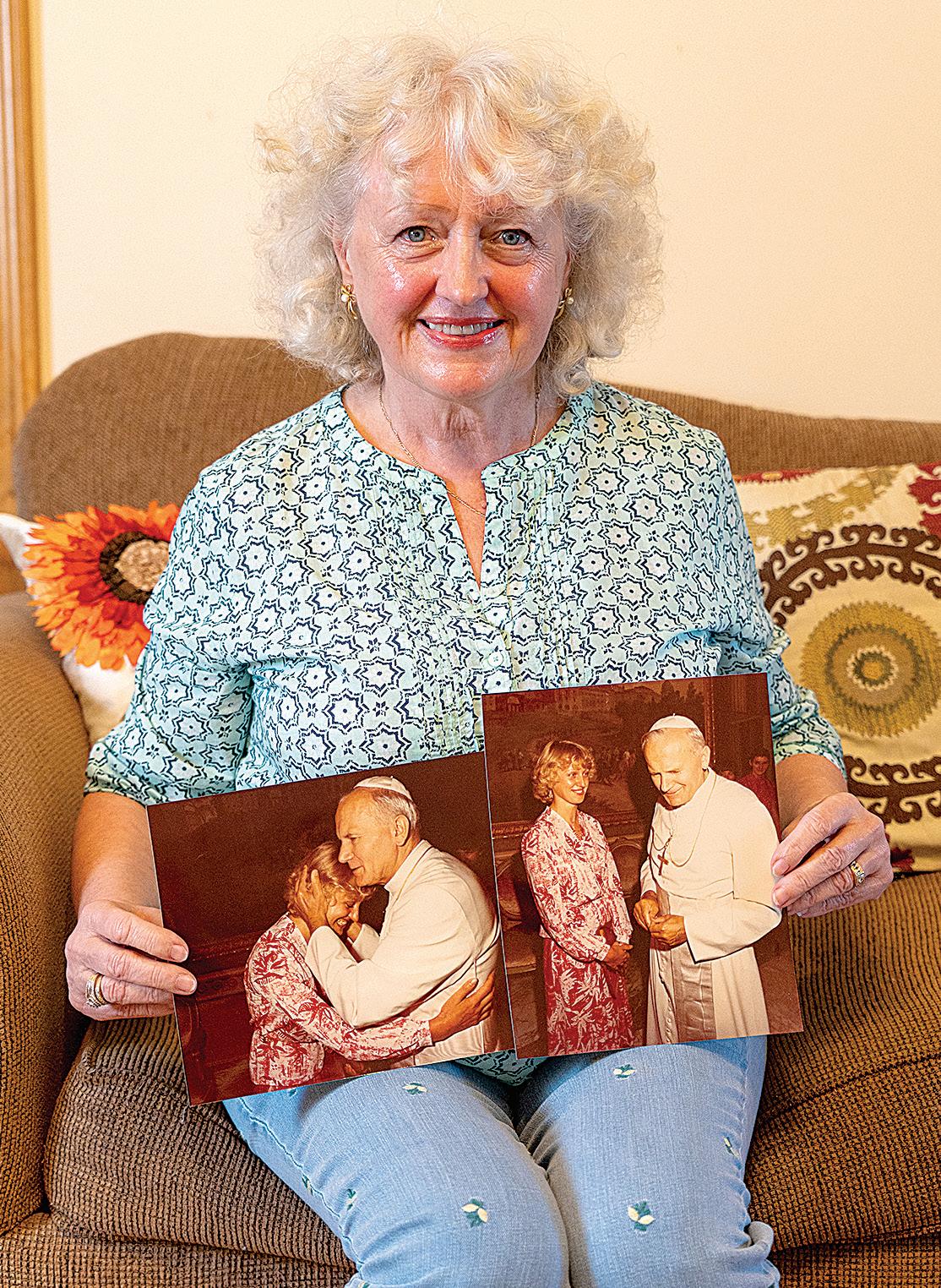

BRIAN SEGOVIA bmsegovia@rcdoc.org
BOONE — Aleksandra Banasik was rebellious from an early age. Although she lived in Poland under communism, an ideology which from the 1940s to the 1980s strongly limited religious freedom, her mother imposed strict rules: She had to attend Mass every Sunday and report what the priest said in his homily to ensure she had gone.
But Banasik had her own plan.
“I would stay just to hear the first words of the homily, to get an idea of what it was about, and then my friends and I would go to the cinema,” she remembered with laughter. “My mother never found out.”
Today, Banasik works as the Hispanic Ministry coordinator of the vicariate, or region of the diocese, in Boone. She recognizes that it was the Holy Spirit who guided her life from rebellion toward an extraordinary friendship with a saint: John Paul II, whose feast day was Oct. 22.
At 18, Banasik was a curious young woman who wanted to discover the world –she had no idea at the time that would lead to a lifelong friendship with a future pope and saint. Through her relationship with some nuns, she got the opportunity to study at a Catholic school for girls in England. It was her first exposure to an environment in which she lived with young women from different countries and cultures.
There, however, she felt lonely. “I was far from my family, and I couldn’t even call my mom,” she recalled. “But it was in the midst of that loneliness that I discovered God.”
She came from a working class family, while many of the girls were from wealthy families. What struck her most, however, weren’t the material differences, but the spiritual ones. Banasik maintained her daily prayers before meals and at bedtime, and that awakened curiosity.


“I didn’t know much about the Church, but I knew I had to pray,” she said. “The girls asked me: ‘Why do you pray?’ And that was difficult … because I didn’t have an answer.”
It was at that moment that something in her sparked. She realized she couldn’t justify what she believed, and that shook her deeply.
“I had to know how to defend my practices,” she says. “So I decided I was going to go to university to study theology.”
Back in Poland, she enrolled in the Pontifical University of Kraków. There she began a new stage, full of study, formation and providential encounters.
During her university years in Kraków, Aleksandra met then-Cardinal Karol Wojtyła, the future Pope John Paul II. He was close to the students, with whom he often shared meals and conversations.
“I had the opportunity to share many dinners with him at the university,” Banasik said.
They had much in common. “One of the things I remember most about him was his love of singing,” Banasik said, recalling how she sang with a student group.
Despite the difficult situation that Poland was in under communism, Wojtyła encouraged young people to live the faith courageously. He promoted organizing Masses and pilgrimages despite the regime’s restrictions.
“He was an excellent leader of the diocese at that time,” Banasik reflected. “He would tell us: ‘Do not be afraid, open the doors.’”
She also remembers his deep Marian devotion: “He offered his life to the Blessed Mother.”
A year later, Banasik received news that left her speechless: Her beloved cardinal had been elected pope. On Oct. 16, 1978, Karol Wojtyła became John Paul II, the first nonItalian pope in more than 400 years.
“When I saw that it was him, I couldn’t believe it,” Banasik says.
In July 1979, the new Pope John Paul II visited Kraków. Amid the crowd that came to see him was Banasik, who saw him pass in his popemobile, dressed in white.
“It was a historic event for Poland,” she recalled. It would not be the last time she saw him up close.
After studying for a year and a half in Kraków, Banasik felt the call to continue her formation in Rome at the Pontificia Università Urbaniana. She was accepted, but she did not have a student visa.
“I had travelled with a tourist visa, and I didn’t know how the formalities worked,” she recounts. “Everyone told me I wouldn’t be able to get the visa, but I had faith that God would help me.”
She presented herself at the immigration office with that conviction. “With God’s help, I will get the student visa,” she said. The official, surprised, responded with a laugh: “Really?” Banasik answered, “Yes.”
The incredible happened: the official stepped away and returned with her passport stamped with the student visa. “It was a moment of grace. God is great,” she says.
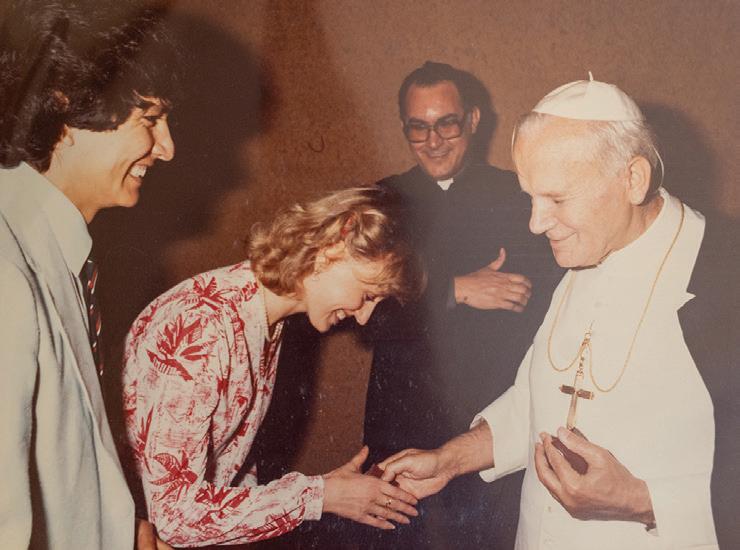
In Rome, Banasik and other students lived at Castel Gandolfo, in a section of the university next to the pope’s garden in his summer residence. Thanks to her friendship with photographer Arturo Mari, she was able to attend a private audience with the Holy Father.
She clearly recalls the moment when the pope first saw her in Rome. “His expression changed. Then he approached me and greeted me in Polish, something he did not usually do. He spoke to me as though I were his daughter,” Banasik recalled.
From that moment, their relationship deepened. The pope became interested in her studies and her life in Rome.
“He would tell me: ‘Keep studying. After each exam, you have to come and tell me how it went,’” Banasik said.
That closeness was vital for Banasik, who was far from home. “From that moment, the pope took the place of my father. He knew I was alone and showed a very
LISA M. GERACI lmgeraci@rcdoc.org
CHARLOTTE — Custodians of a first-class relic of St. Charbel Makhlouf, a 19th-century Lebanese monk known for performing prolific miracles, will make three stops in the Diocese of Charlotte Nov. 1-8.
St. Thomas Aquinas Church in Charlotte, Immaculate Conception Church in Hendersonville and Our Lady of Grace Church in Greensboro will host the relic. The parishes are encouraging the faithful to venerate the saint whose intercession has been reported to have brought about more than 33,000 miracles – healing everything from hearing loss to cancer.
Charles Longino, operations manager of Our Lady of Grace Parish, explained how the relic tour originated. “A couple that is from Ireland was on a pilgrimage in Europe, befriended monks who live at the monastery where St. Charbel’s relics are housed, and after developing a relationship suggested taking the relics on tour, and the monks agreed,” he said.
The main events will focus on St. Charbel, with the custodians discussing
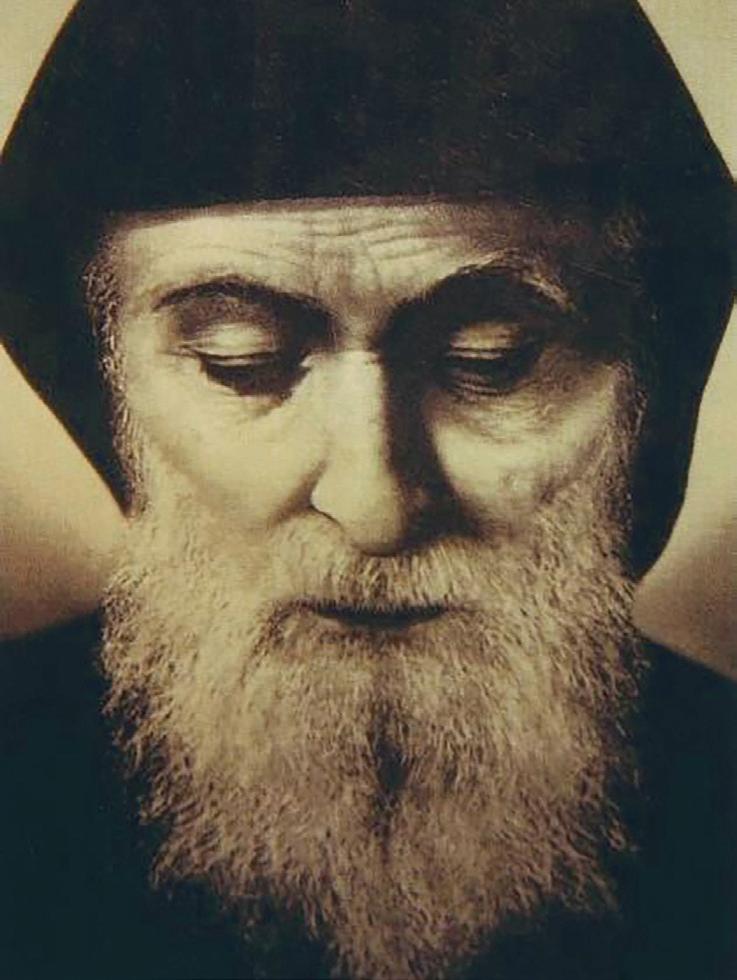
his life and the miracles attributed to his intercession. At Immaculate Conception and Our Lady of Grace, his relics will be accompanied by those of St. John of the Cross, St. Teresa of Avila, St. Thérèse of Lisieux, St. Philip Neri and St. Philomena.
But the opportunity for prayers lasts longer than the tour, explained Immaculate Conception’s director of operations, Bertha Medina.
“The custodians are bringing with them a prayer box for the faithful to deposit prayer intentions, and at the end of the tour all of those prayer intentions will be taken back to the tomb, which is a documented miracle site,” she said.
“I think this is a great opportunity to reinvigorate that power of intercession, especially walking into the month of November, when we celebrate All Saints,” Medina said. “They might not be physically there with us in this moment of time and space, but we are together.”
St. Ann Church and St. Patrick Church in Charlotte and St. Mark Church in Huntersville also will have veneration of relics from other saints, see Page 5 and their websites for details.
St. Charbel Makhlouf was born on May 8, 1828, in Biqa-Kafra, northern Lebanon. Joseph, his baptismal name, was the youngest of five children born to a poor but devout family. He left home at 23, entering the Monastery of St. Maron at Annaya. Ordained a priest in 1859, he was noted for his devotion to the Blessed Sacrament. He lived as a hermit, but his reputation for holiness caused people to seek him out. He died on Christmas Eve in 1898.
Soon after his death, an extraordinarily bright light surrounded his grave for more than a month. Monastery officials then requested permission from Church authorities to exhume the body. His corpse, which was found without decay four months after his death, was transferred into a special coffin. Pilgrims started visiting the monastery and asking for his miraculous intercession.
St. Thomas Aquinas Church will display the relic along with other relics from their collection from 6:30 to 9:30 p.m. on Nov. 1 and from 6:30 to 9:30 p.m. on Nov. 2. The relics will be displayed in a walking tour allowing visitors to venerate, pray and read about each saint.
Immaculate Conception Church in Hendersonville will host veneration and a discussion from 7 to 9 p.m. on Nov. 3, after the noon Mass and from 6:30 to 8:30 p.m. on Nov. 4, and from 7 to 9 p.m. on Nov. 5.
1 2 3
Our Lady of Grace in Greensboro will host veneration and a discussion from 6 to 9 p.m. on Nov. 7 and after the 8 a.m. Mass until 11 a.m. on Nov. 8.
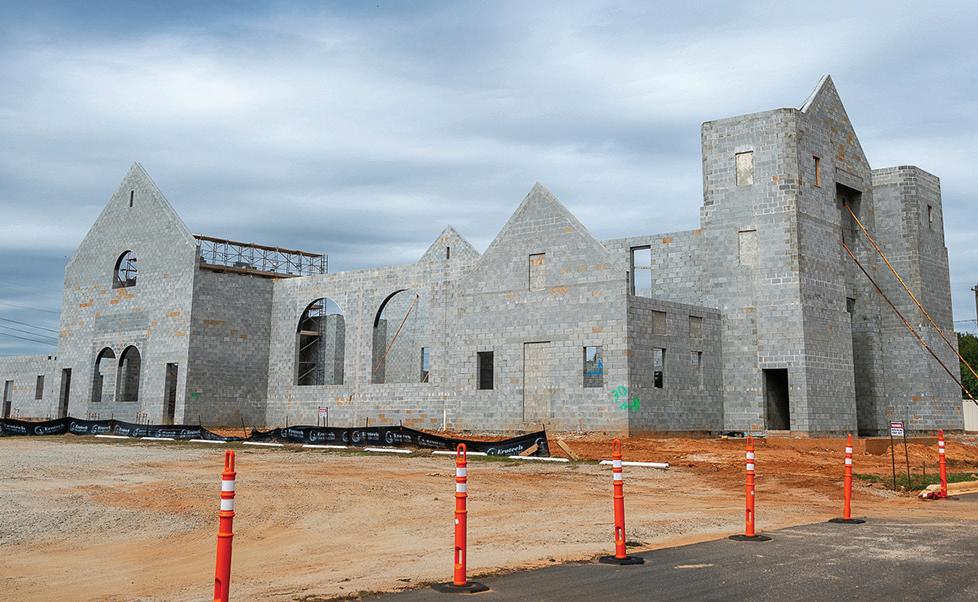
balcony is complete, and electrical contractors are working on locating mounting boxes for lights, speakers and cameras. Parish officials estimate construction of the 16,000-square-foot church with capacity for nearly 700 will be complete in about a year.

For 67 years St. Charbel’s incorrupt remains exuded a fluid described as supernatural in nature. When he was beatified in 1965, his remains were found to have decayed until only his bones were left, and the mysterious fluid ceased. However, enough had been collected to furnish a supply from which small quantities are still distributed. St. Charbel was canonized in 1977.
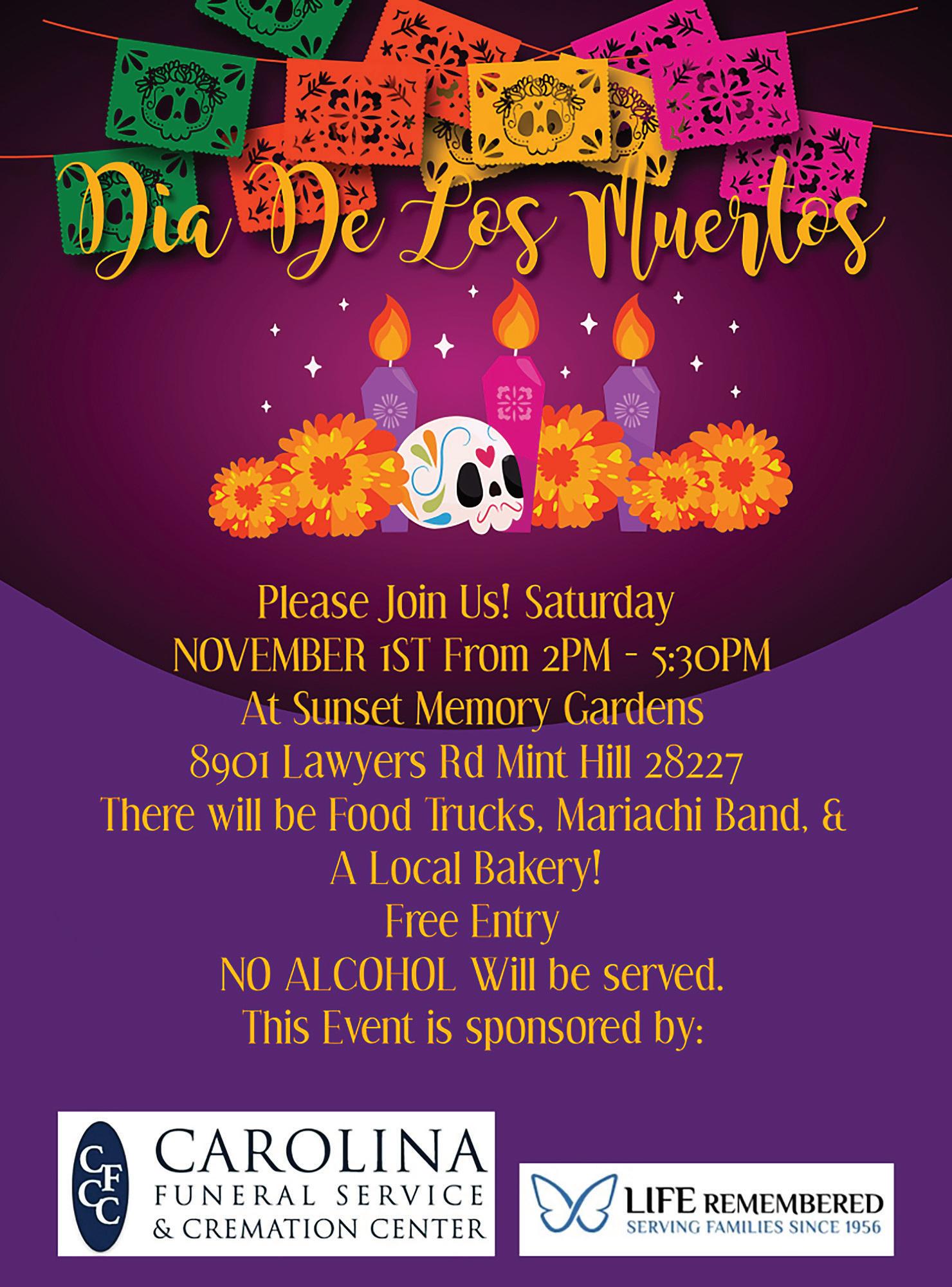

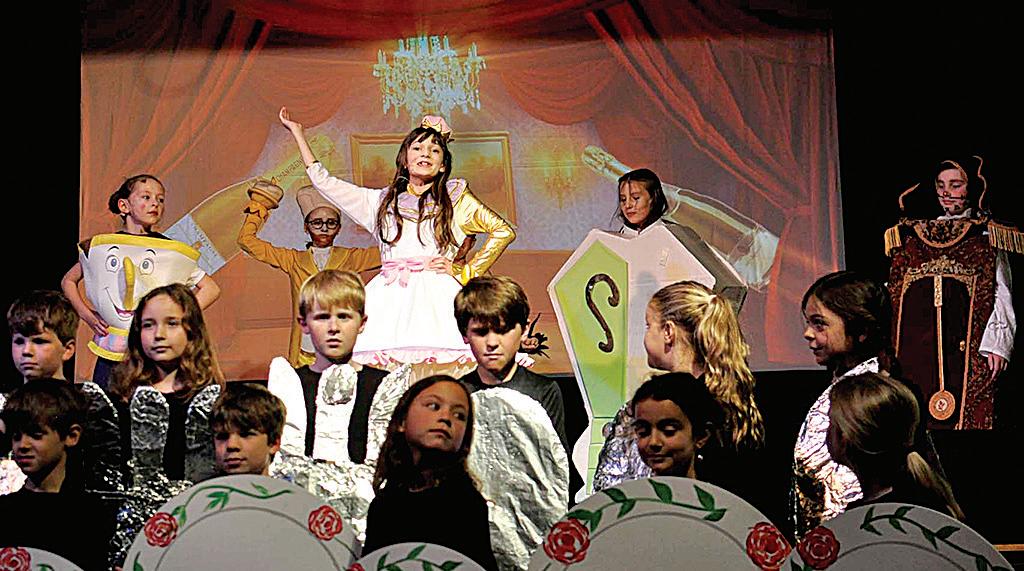
LISA M. GERACI lmgeraci@rcdoc.org
GREENSBORO — Julie Ray has grown into the role of leading one of the few drama programs for elementary and middle school students in the Triad area at St. Pius X School.
“It would be like a dream for me to see theater programs like this across the diocese,” Ray said. “I am living proof that you don’t
have to have a theater background to enjoy the theater. There just has to be that desire.”
Ray admits that opening nights sometimes make her nervous. Yet, when the curtains unfold, God makes it work.
Her career in theater began right after COVID with a play in her English class.
“I saw how much it did for the kids,” Ray recalled. “It brought those who are normally very shy out of their shells.”
It was an experience that Ray wanted to

Giving appreciated stock to your parish, Catholic school, agency, the diocese or the Foundation creates a gift that will benefit your desired beneficiary and provide you tax benefits.
For more information, go to www.charlottediocese.givingplan.net or call Gina Rhodes at 704/370-3364.
replicate, so when the former principal asked her to restart the school’s theater program, she was eager to oblige.
“I wanted to bring it back, do some plays,” Ray said. “I have seen kids grow so much.”
Over the years, the program grew by leaps and bounds. Whether dancing around stage dressed as glass plates for “Beauty and the Beast” or singing in green slippers for the “Elf” Christmas musical, the drama program at St. Pius X shines in the public spotlight, raising money for the fine arts program and having a ball doing it.
Performances continue to sell out and thrill crowds while boosting the confidence of students and adults alike. Earlier this month, students, staff and parishioners put on a talent show featuring 25 performances on the main stage.
Ray debuted her singing with the Bette Midler song “The Glory of Love,” prepping her for her performance as Mrs. Hannigan in “Annie Junior,” the school’s annual play that will take the stage in February.
Ray filled the role of Annie at a casting call last spring. “When they came back in August, we were ready to roll,” Ray said.
This Annie does not have red curly hair, but just like St. Pius X, she’s original and sets her own trends, Ray said.
“This isn’t meant to be a professional
St. Luke Catholic Church Mint Hill, NC 28227
St. Luke Catholic Church is seeking a full-time Director of Music. We are a Catholic parish located in Mint Hill, NC, just outside of Charlotte, NC. We currently have 1,800 registered families and ve weekend Masses.
• Active, practicing Catholic
• Bachelors/Master’s degree in Music
• Piano/keyboard pro ciency
• Choral conducting skills
• Leadership experience in a liturgical setting
• Knowledge of Catholic liturgy
• Strong communication and organizational skills. Requirements for this position:
performance. It is meant to give kids that moment to know that they can do it,” Ray said. “After all, the stage is a place for kids.”
The drama team of around 30 fourth- to eighth-grade cast members meets once a week. Closer to production, rehearsal will jump to twice a week. A month prior, performers meet every night.
Students are responsible for sets and props. Costumes are sometimes bought or sewn by volunteers. The stage is small, so instead of painting backdrops, they rent projections.
“If you don’t have a large budget, you do what you can,” Ray said.
Ultimately, it takes a crew working together behind the scenes to bring it all together. Ray works on the blocking and lines during rehearsals and hands the performers off to music teacher Rob York on Saturday mornings.
“I have a parent volunteer who practices the choreography with them,” Ray said.
“We are working as a team to create something really beautiful,” Ray said. “Some kids don’t do sports, and they don’t play an instrument. This is something that they can do. That light God gave them shines. Theater is magic, and this is all about the joy that it brings to the kids.”
Salary and bene ts commensurate with education and experience.
Interested candidates, please send your resume and reference information to: Regina Nivens at reginanivens@stlukecatholicminthill.org
LISA M. GERACI lmgeraci@rcdoc.org
GREENSBORO — Francesca and Paul Nixon’s love story continues beyond the grave through two recently crafted relief sculptures installed on the sanctuary walls of Our Lady of Grace Church that depict the Ascension of the Lord and the Assumption of Mary.
Francesca, the love of Paul Nixon’s life, tragically died after falling from a horse last year. He still gets glimpses of her in dreams and visions as she guides Nixon’s healing through the talent she unlocked in him – his art.
Now, when parishioners raise their hearts and minds toward the heavens, they get a peek of the couple’s love layered within the sculptures.

“I did this from my heart, for my wife,” Nixon said. “God gave me the gift I didn’t see. Francesca saw that gift and brought it out of me. What better place to compliment both God and my wife?”
The intricate works of art, each measuring three feet by two feet, took four months to complete. The depictions were hand-sculpted from clay and then hardened with cement for texture.
“I was sitting one day writing, and then all of a sudden this thought popped into my head, ‘I need to do a panel of the Assumption.’ The idea came to me through her,” Nixon recalled.
The relief panel is a three-dimensional image of Mary being carried to the heavens by five angels, each sculpted in clay and then cast in a high-grade sculptors’ cement. The background shows 10 more angels surrounding the Queen of Heaven. The top of the wooden frame is an upcycled piece of a Victorian couch
“I couldn’t just do the one panel. It wouldn’t make sense. Then the thought of doing the Ascension came into my mind,” Nixon said.
The hand carved centered “OLG” on each frame was an afterthought that tied the two pieces together as did the antique white coloring.
He showed his sculpture to Father Casey Coleman, pastor of Our Lady of Grace Parish, and received the same enthusiastic
response he now witnesses from people in the pews.
“I’ve already watched people reach out, touch and stare at them,” he said. “And I know this is exactly what she wants from me.”
Nixon, an auto mechanic who became an acclaimed artist in his late 40s after a huge nudge by his late wife, has his fingerprints all over Our Lady of Grace Church – from the confessionals’ woodwork and stained glass to the intricate shrine boxes and hymnal stand.
Bishops worldwide carry his hand-carved croziers, and his hand-sculpted totem poles and memorial sculptures are scattered across the Carolinas. Some of his best work is in glass-enclosed cases in the Yeats Memorial Building in Sligo, Ireland.
Yet Nixon doesn’t credit his own hands, but Francesca, who pushed him to discover the potential God created in him. Before his wife’s encouragement, his life was on a dramatically different path.
Originally from Dublin, he spent his 20s and 30s on wild adventures sailing the seas, ballroom dancing, working as a stunt double, and riding bikes alongside the Hell’s Angels.
“I realized I could no longer do all this by myself,” Nixon said. “I had all these wonderful experiences but no one to share them with.”
So he flipped a coin at an Irish bar and landed in New York.
There he met Francesca. When she dropped off her car at the auto shop where he worked, his heart hit the floor. It was love at first sight.
Three months later, they married. He was 40, and she was 38. They quickly started a family, adopting an infant from Guatemala. That child motivated Francesca to become Catholic.
“She told me she wanted to convert to Catholicism because we were adopting a little girl and we needed to all be on the same page,” Nixon said. “In doing that, she actually brought me back into the Church.”
Francesca knew Nixon had artistic ability and asked him to create a gift for their aunt: a cane.
“I worked on that cane for three months and hated every moment of it, until the day we presented it to Aunt Mary and the outpouring of tears and joy,” he recalled. “To do something from your heart and get that type of human emotion, I knew that was my purpose.”
The reaction brought Nixon clarity. He needed to nurture his ability to sculpt. He slowly put down his mechanics tools and has now come to adore his whittling knife.
He doesn’t allow his fingers too much rest these days, constantly occupying himself with a novel creation – anything that he thinks would make Francesa smile.
He has some sleepless nights and can at times cut his loneliness with a knife. Yet, he stays busy, now creating 30 new pieces for an upcoming local art gallery.
“Even though she is gone, and I do still have many, many tearful nights, there is such an inspiration, there is such a drive now because I know this is for her and this is what she would want for me,” Nixon said. “And, in all our 30 years together, I never wanted to fail her in any way.”
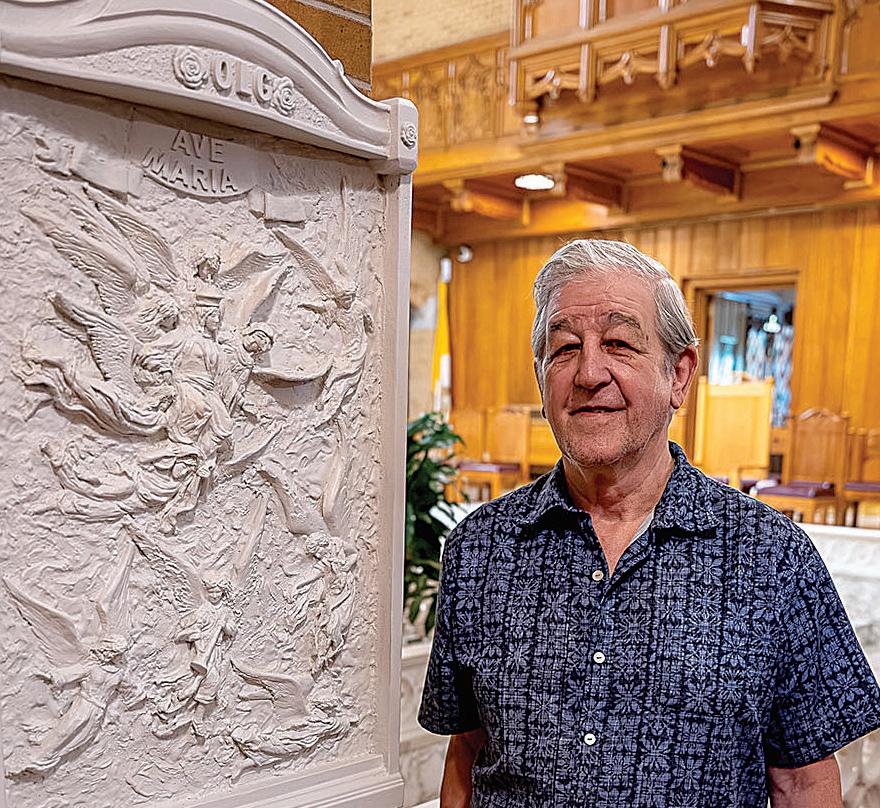

Turn your unused car, truck, boat, RV, or motorcycle into a force for good. Donate it to Catholic Charities and help fund programs for those in need.
And receive a tax benefit!
All vehicle makes and models are accepted.


CHRISTINA LEE KNAUSS clknauss@rcdoc.org
— Spiraling organ and choral music ushered in a new era for St. Lawrence Basilica at a ceremony to kickstart a massive restoration project for the historic building.
About 150 parishioners and members of the public gathered Oct. 17 for a “Restoration Celebration” featuring speeches, prayer, tours and the performance of a choral work composed by renowned Spanish architect Rafael Guastavino Sr., who designed and supervised the construction of the 116-year-old basilica and is buried inside it.
Perched on a hill in the middle of downtown Asheville, St. Lawrence Basilica is a beloved landmark for the city and the diocese, as well as for architects and historians. The basilica, which is on the National Register of Historic Places, is known for its large, elliptical dome – one of the largest of its kind in North America – and its Catalan vaulting using Guastavino’s signature tile and masonry technique.
“The basilica is one of the most important churches in the United States,” said Shannon Brown, project manager with New Yorkbased John G. Waite Associates. The firm was selected as the architect for the restoration project because of its extensive experience in historic preservation.
“There’s a renewed appreciation for traditional Catholic architecture, and there’s really no other church like this,” said Brown, who flies to Asheville from New York every two weeks to be on site. “It’s a gem of the architectural world.”
of its architectural, historical and cultural significance.” said Mary Everist, parishioner and president of the Basilica Preservation Fund, a tax-exempt, nonprofit organization working to preserve the basilica and its unique art and architecture.
This first of three phases will take about a year, but the full restoration will stretch over many years as fundraising continues and could eventually cost an estimated $30 million.
As Aaron Ernst, senior project manager for North Carolina-based project contractor Blum Construction, explained, “It’s not just a building, it’s a living work of art. Every brick, every tile carries with it a legacy.”
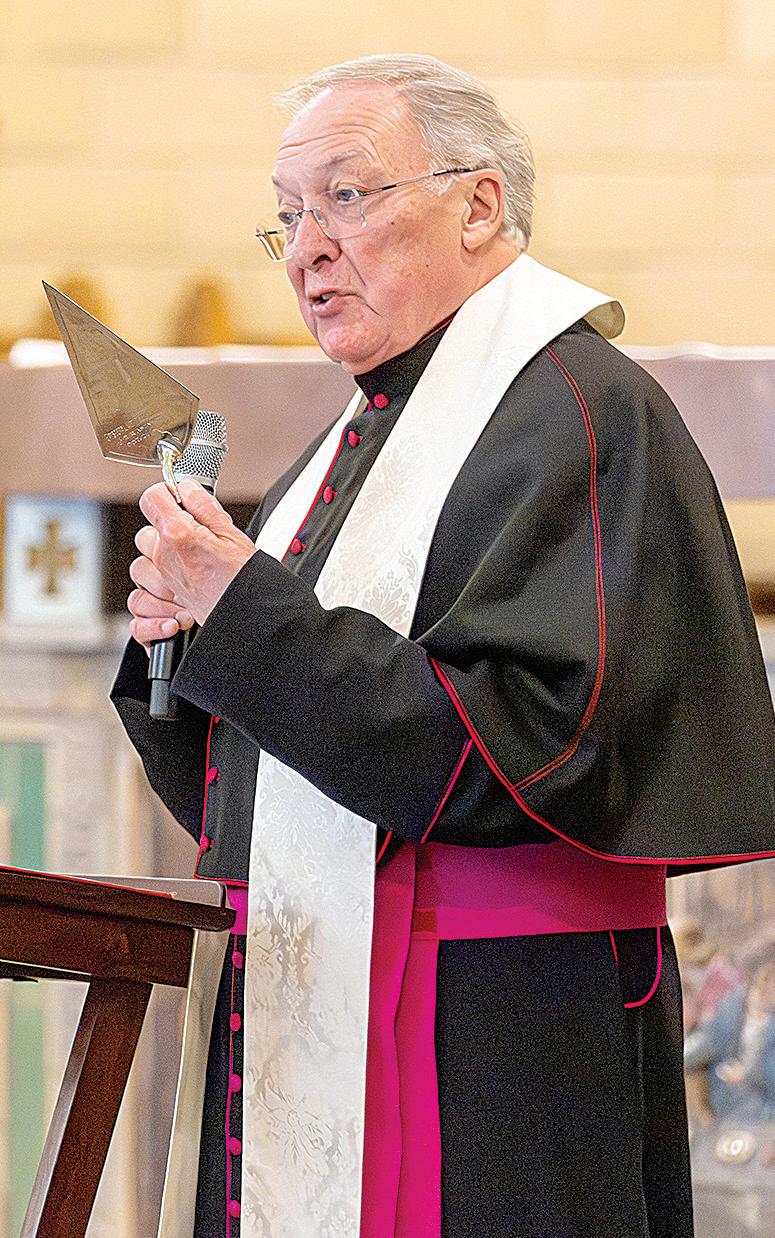
Roger
Parishioners and donors from around the country have raised more than $6.4 million of $7.7 million needed for the first phase of the restoration, which will include replacing the copper-clad roof on the basilica’s famous dome, installing new storm drains and other measures to stop water intrusion, and repairing damage from Tropical Storm Helene. Work also will include replacing gutters and cornices around the dome, repairing the oculus skylight and stabilizing masonry over one of the side chapels.
“This project has taken years of planning, fundraising, research and consultation. You can’t just call in a roofer for a building like this because
Guastavino’s tiled vaulting designs can be seen at Carnegie Hall, Ellis Island, Grant’s Tomb and Grand Central Station in New York City, earning him the nickname “the architect of New York,” and at other locations around the country.
In Asheville, Guastavino created an irreplaceable architectural landmark, according to Anne Chesky, former director of the Asheville Museum of History and a member of the Guastavino Alliance, a group dedicated to promoting and preserving his legacy.
“The building represents an earlier era of Asheville history, and it’s anchored there in the center of the city,” Chesky said. “It’s a very special building from the outside, and the interior has that grandeur to it, but still feels intimate somehow.”
Friday’s celebration had that same feel, with people quietly appreciating the beauty of the space.
One highlight was hearing the performance of a Sanctus and Hosanna composed by Guastavino. He was composing a Mass for the basilica’s dedication at the time of his death in 1908.
(See a video of the ceremony including Guastavino’s music at www.youtube.com/ live/LGi7ZIk5o1k)
Since it was completed in 1909, the
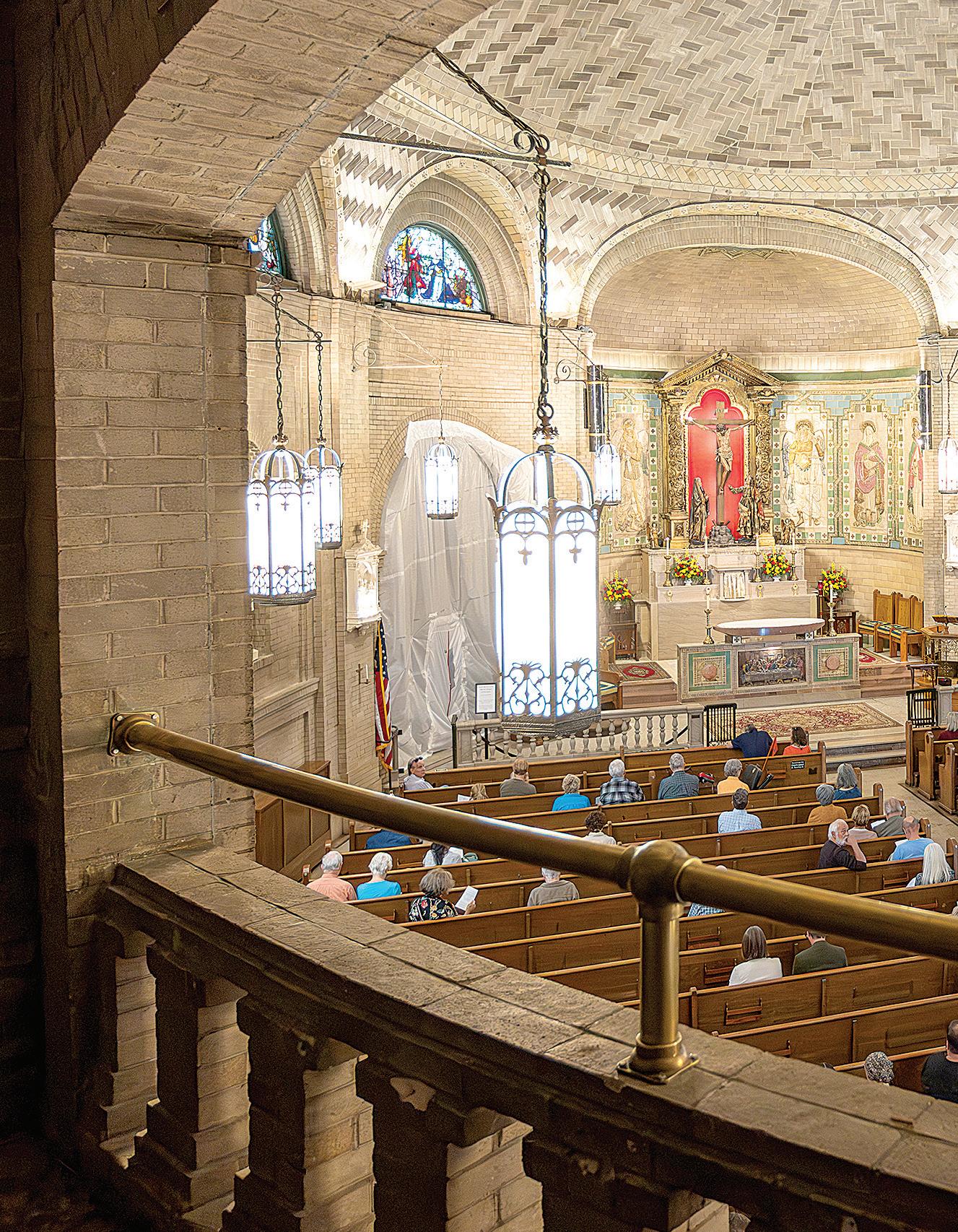
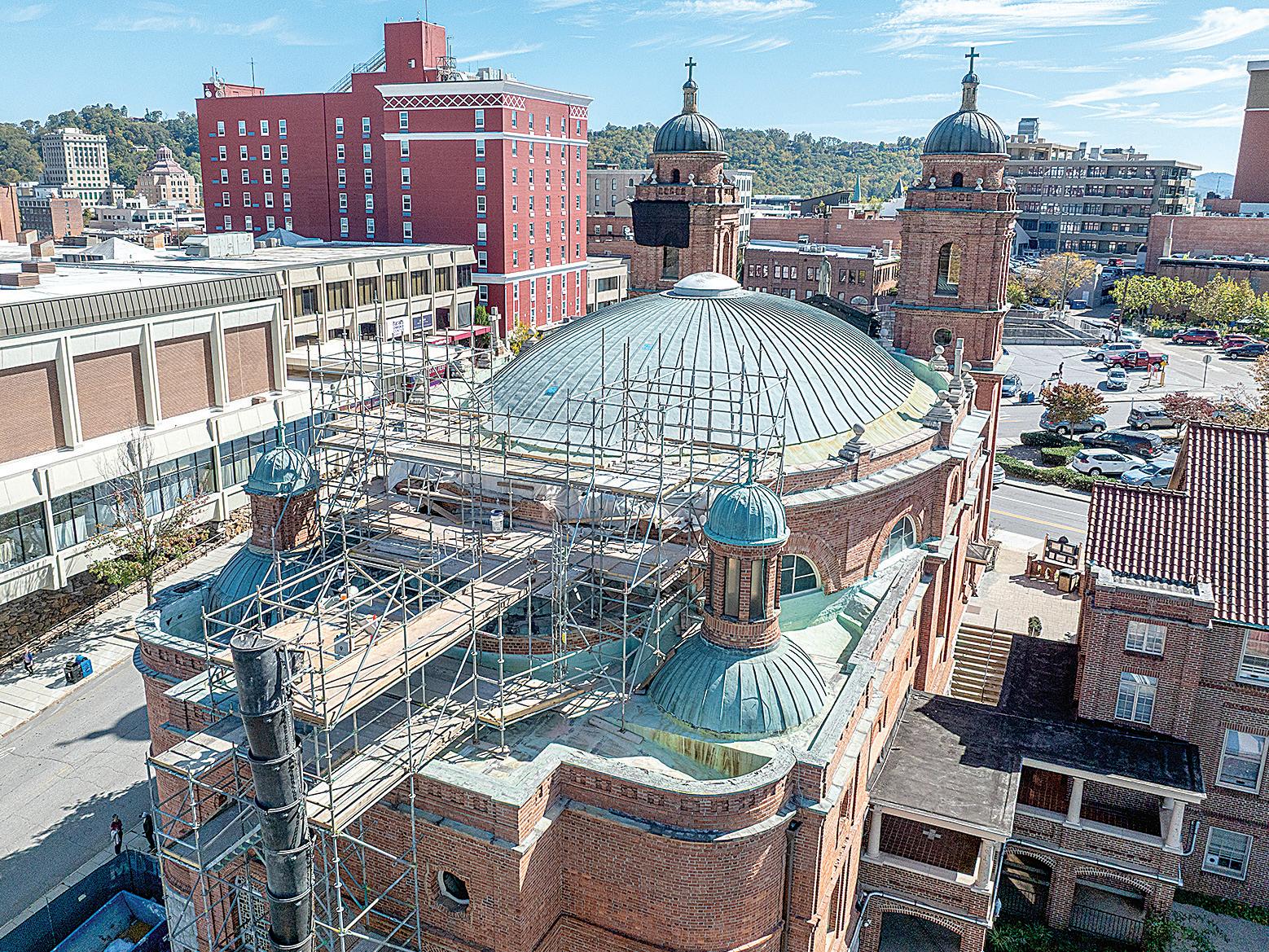
basilica has been an important witness of the faith in a region which didn’t have many Catholics.
“We’re right downtown, which is such a great evangelistic presence,” said Monsignor Roger Arnsparger, St. Lawrence’s pastor and rector.
“Sometimes visitors, especially young people, will come to see it and end up inquiring on how they can become Catholic.” Everist told those gathered she met a group from Germany just minutes before the celebration started.
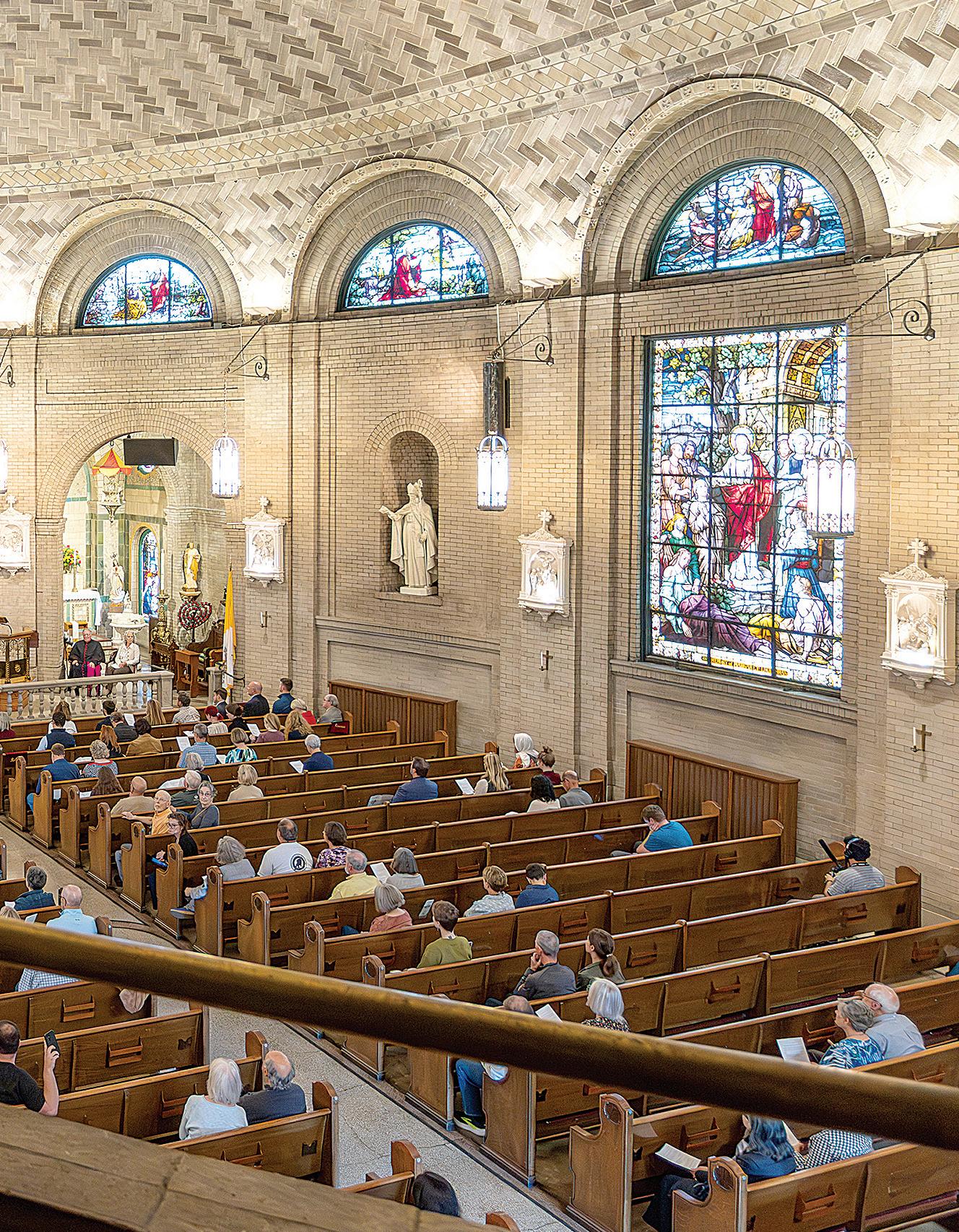
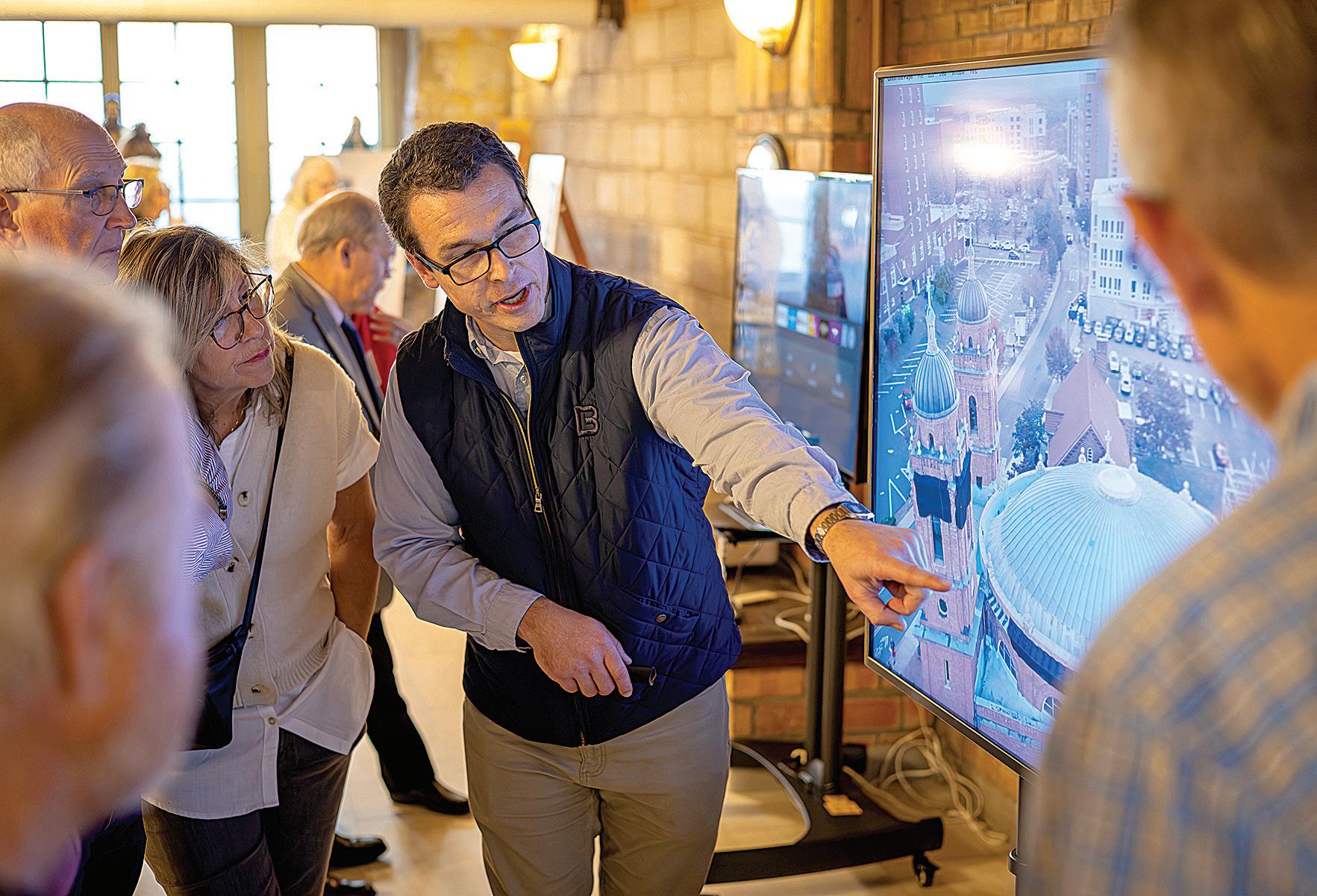
“People come in and they’re amazed. You can watch their jaws drop. They go silent,” she said. “You look up at that dome and feel the presence of God. It’s not only an amazing architectural treasure, but an amazing way to spread the word of the Catholic faith.”
CHRISTINA LEE KNAUSS clknauss@rcdoc.org
— La música de órgano y coral llenó el aire el 17 de octubre en la Basílica de San Lorenzo, marcando el comienzo de una nueva era con una ceremonia que dio inicio a un ambicioso proyecto de restauración del histórico edificio.
Unas 150 personas, entre feligreses y miembros del público, se reunieron para una “Celebración de Restauración” que incluyó discursos, oración, visitas guiadas y la interpretación de una obra coral compuesta por el renombrado arquitecto español Rafael Guastavino padre, quien diseñó y supervisó la construcción de la basílica hace 116 años y está enterrado en su interior.
Ubicada en lo alto de una colina en pleno centro de Asheville, la Basílica de San Lorenzo es un monumento querido tanto por la ciudad como por la diócesis, así como por arquitectos e historiadores. La basílica está inscrita en el Registro Nacional de Lugares Históricos y es conocida por su gran cúpula elíptica —una de las más grandes de su tipo en América del Norte— y por sus bóvedas catalanas, que utilizan la técnica de azulejos y albañilería característica de Guastavino.
“La basílica es una de las iglesias más importantes de Estados Unidos”, afirmó Shannon Brown, gerente de proyecto de la firma John G. Waite Associates, con sede en Nueva York. Esta empresa fue seleccionada como la arquitecta del proyecto de restauración debido a su amplia experiencia en preservación histórica.
“Hay un renovado aprecio por la arquitectura católica tradicional, y realmente no hay otra iglesia como esta”, dijo Brown, quien viaja desde Nueva York a Asheville cada dos semanas para
supervisar el sitio. “Es una joya del mundo arquitectónico”.
Feligreses y donantes de todo el país han recaudado más de 6.4 millones de los 7.7 millones de dólares necesarios para la primera fase de la restauración. Esta incluirá la sustitución del techo revestido de cobre de la cúpula, la instalación de nuevos desagües pluviales y otras medidas para detener la filtración de agua, así como la reparación de los daños causados por la tormenta tropical Helene. También se reemplazarán canaletas y cornisas alrededor de la cúpula, se reparará el tragaluz del óculo y se estabilizará la mampostería sobre una de las capillas laterales.
“Este proyecto ha requerido años de planificación, recaudación de fondos, investigación y consultas. No se puede simplemente llamar a un techador para un edificio como este debido a su importancia arquitectónica, histórica y cultural”, explicó Mary Everist, feligresa y presidenta del Fondo de Preservación de la Basílica, una organización sin fines de lucro y exenta de impuestos que trabaja para conservar la basílica y su arte y arquitectura únicos. Esta primera de tres fases tomará alrededor de un año, pero la restauración completa se extenderá por muchos años a medida que continúe la recaudación de fondos, y podría eventualmente alcanzar



BRIAN SEGOVIA bmsegovia@rcdoc.org
Aleksandra Banasik fue una persona muy rebelde desde temprana edad. Aunque vivía en Polonia durante la época del comunismo, una ideología que entre los años 40 y 80 limitó fuertemente la expresión religiosa, su madre le imponía reglas estrictas: debía asistir a misa todos los domingos y contarle con detalle lo que el sacerdote decía en la homilía, para asegurarse de que realmente había asistido.
Pero Aleksandra era una joven atrevida, con ganas de vivir a su manera.
“Yo me quedaba solo para escuchar las primeras palabras de la homilía, para tener una idea de qué trataba, y luego, mis amigas y yo nos íbamos al cine,” recuerda entre risas. “Mi madre nunca se enteró.”
Hoy, Aleksandra trabaja como Coordinadora del Ministerio Hispano del vicariato, o región de la diócesis, en Boone. Y aunque su juventud estuvo marcada por cierta rebeldía, reconoce que fue el Espíritu Santo quien guió su vida desde la rebeldía hacia una amistad extraordinaria con un santo: Juan Pablo II, cuya fiesta se celebra el 22 de octubre.
COMIENZOS DE LA DIVINA PROVIDENCIA
A los 18 años, Aleksandra ya era una joven curiosa que deseaba descubrir el mundo. Gracias a su relación con unas monjas, consiguió la oportunidad de estudiar en una escuela católica para niñas en Inglaterra. Fue su primer contacto con un entorno internacional, donde convivió con jóvenes de diferentes países y culturas. Allí, sin embargo, se sintió sola. “Estaba lejos de mi familia, y ni siquiera podía llamar a mi mamá. Pero fue en medio de esa soledad donde descubrí a Dios.”
Venía de una familia de clase obrera, y en aquella escuela muchas niñas eran de familias adineradas. Pero lo que más le llamó la atención no fue lo material, sino la diferencia espiritual. Aleksandra mantenía sus prácticas de oración diaria, antes de las comidas y al acostarse, y eso despertaba curiosidad.
“No sabía mucho de la Iglesia, pero sabía que había que orar. Las niñas me preguntaban: ‘¿Por qué oras?’ Y eso fue difícil… porque no tenía una respuesta.”
Fue en ese momento cuando algo en ella se encendió. Se dio cuenta de que no podía justificar lo que creía, y eso la sacudió profundamente.
“Yo tenía que saber cómo defender mis prácticas,” afirma. “Entonces decidí que iba a ir a la universidad para estudiar teología.”
De vuelta en Polonia, ingresó a la Universidad Pontificia de Cracovia. Allí comenzó una nueva etapa, llena de estudio, formación… y encuentros providenciales.
ENCUENTRO CON EL FUTURO SANTO PADRE
Durante sus años universitarios en Cracovia, Aleksandra conoció al entonces Cardenal Karol Wojtyła, futuro Papa San Juan Pablo II, una figura muy cercana a los estudiantes, con quienes compartía cenas y conversaciones.
“Allí conocí al Cardenal Wojtyła”, explica Aleksandra. “Tuve la oportunidad

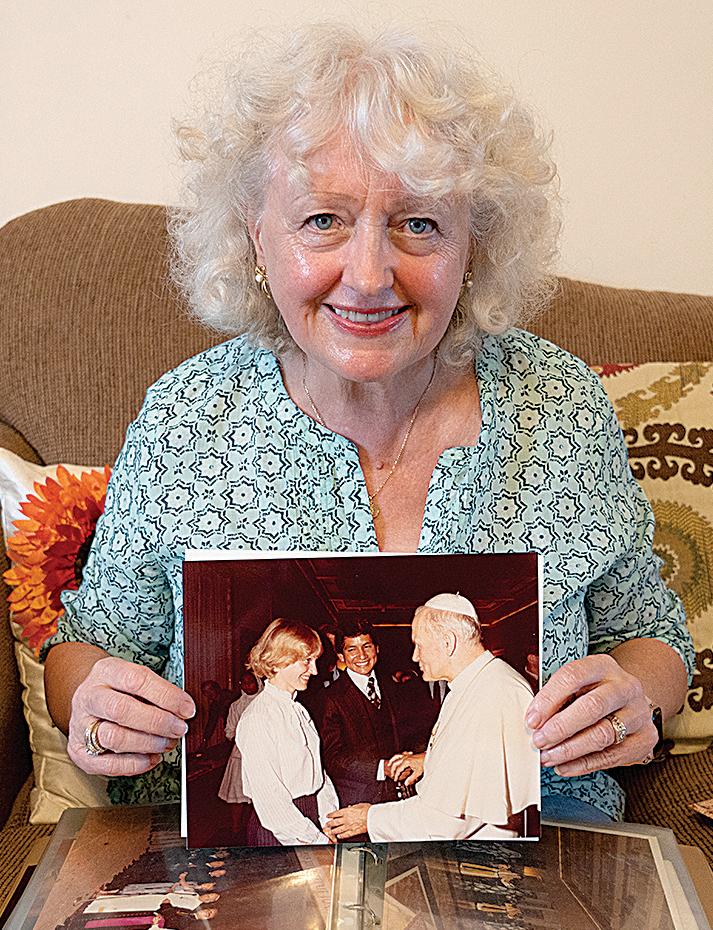
de compartir muchas cenas con él en la universidad.”
Recuerda con especial cariño su alegría y su amor por el canto. “Una de las cosas que más recuerdo de él era su amor por cantar”, evoca Aleksandra, quien cantaba con un grupo de estudiantes y compartía ese gusto con él.
En medio de la difícíl situación que vivía Polonia bajo el comunismo, Wojtyła animaba constantemente a los jóvenes a no tener miedo, a vivir la fe con valentía.
Impulsaba la organización de misas y peregrinaciones, a pesar de las restricciones del régimen.
“Fue un excelente líder de la diócesis en ese momento,” reflexiona Banasik. “Nos decía: ‘No tengan miedo, abran las puertas’.”
También recuerda su profunda devoción mariana: “Él ofreció su vida a la Madre Santísima.”
UNA SORPRESA PROVIDENCIAL
Un año después, Aleksandra recibió una noticia que la dejó sin palabras: su querido cardenal había sido elegido Papa. El 16 de octubre de 1978, Karol Wojtyła se convirtió en Juan Pablo II, el primer Papa no italiano en más de 400 años.
“Cuando vi que era él, no lo podía creer”, dice Aleksandra.
En julio de 1979, Juan Pablo II visitó su diócesis natal en Cracovia. Multitudes acudieron a verlo. Aleksandra también estuvo presente y lo vio pasar en su papamóvil, vestido de blanco. “Fue un hecho histórico para Polonia”, recuerda. Pero no sería la última vez que lo vería de cerca.
UN SALTO DE FE: RUMBO A ROMA
Después de estudiar un año y medio en Cracovia, Aleksandra sintió el llamado a continuar su formación en Roma, en la Pontificia Università Urbaniana. Fue aceptada, y aunque todo parecía ir bien, había un detalle: no tenía visa de estudiante.
“Yo había viajado con visa de turista, y no sabía cómo funcionaban los trámites”, cuenta. “Todos me decían que no iba a poder obtener la visa, pero yo tenía fe de que Dios me ayudaría.”
Se presentó en la oficina de inmigración con esa convicción. “Con la ayuda de Dios, voy a conseguir la visa de estudiante.” El funcionario, sorprendido, le respondió entre risas: “¿De verdad?”. Aleksandra contestó: “Sí”.
Lo increíble ocurrió: el funcionario se retiró unos minutos y volvió con su pasaporte ya sellado con la visa de estudiante. “Fue un momento de gracia. Dios es grande.”
UNA RELACIÓN DE HIJA Y PADRE En Italia, Banasik y otros estudiantes vivían en Castel Gandolfo, en un apartamento escolar junto a los jardines de la residencia de verano del Papa. A medida que Banasik se involucraba más con la universidad, conoció a un obispo polaco que la invitó, junto con otro estudiante, a asistir por primera vez a una audiencia privada con el Papa, celebrada en el jardín de su residencia de verano. Recuerda con claridad el momento en que el Papa la vio por primera vez desde Roma. “Su semblante cambió. Luego se acercó a mí y me saludó en polaco, algo que no solía hacer. Me habló como si fuera mi padre.”
Más adelante, gracias a su amistad con el fotógrafo Arturo Mari, pudo asistir a muchas más audiencias papales y compartir numerosos momentos con el Papa. Desde ese momento, la relación se volvió personal. El Papa se interesó por sus estudios y su vida en Roma.“Me decía: ‘Sigue estudiando. Después de cada examen, tienes que venir a decirme cómo te fue’.”
Esa cercanía fue clave para Aleksandra, quien vivía sola y sin familia. “Desde ese momento, el Papa tomó el lugar de mi padre. Supo que yo estaba sola y mostró una preocupación paternal muy real.” En una ocasión, durante una audiencia, el Papa incluso la señaló entre la multitud y dijo: “Ella es mi niña.”
“Cada vez que conversábamos, él me escuchaba con atención. Siempre fue como un padre para mí.”
UNA VIDA BASADA EN LA FE
Aleksandra continuó sus estudios, terminó su maestría en teología y se casó en Roma con un estudiante Mexicano de la misma Universidad. Al día siguiente de su matrimonio, el Papa Juan Pablo II fue personalmente a bendecir su unión. Sus hijos también tuvieron la oportunidad de crecer cerca del Papa, viendo su constante ejemplo de humildad y servicio. Por 12 años vivieron en Roma, hasta que Dios los llamó a servir en México. Sin embargo, hasta el fallecimiento del Papa en 2005, la familia permaneció cercana a él. Una de las cosas que lleva cómo recuerdo de sus enseñanzas es su inquebrantable creencia en el poder de la oración, y en particular del rosario.
“Tuvimos muchas bendiciones por estar tan cerca del Papa”, afirma Aleksandra. “Y ahora sigue viviendo en mi corazón como santo. Siempre le pido su intercesión en oración”
Para Aleksandra, la fe no fue simplemente una idea. Fue un camino de confianza total en Dios, adquirido a
del ejemplo de San Juan Pablo II.
BRIAN SEGOVIA bsegovia@rcdoc.org
CHARLOTTE — Cada miércoles, la parroquia Nuestra Señora de Guadalupe en Charlotte se convierte en una de las escenas más importantes para el apoyo alimentario y comunitario del vecindario. Desde las 8 de la mañana hasta las últimas horas de la tarde, más de 30 voluntarios trabajan incansablemente para alimentar a más de 300 familias que esperan en largas filas durante horas hasta poder recibir alimentos semanales.
La líder de esta increíble operación, Casa Marillac, es la directora de caridades de la parroquia: Lupita Nava.
Nava, de origen mexicana, llegó a trabajar a la parroquia en 2016, comenzando como voluntaria en la cocina de la iglesia pero, a través de su interés en la labor social, capitalizó la oportunidad de liderar los esfuerzos de caridad de la parroquia.
“Me sentí muy afortunada de que me hayan dado la oportunidad,” dijo Nava. “Especialmente haciendo algo que ayude a la comunidad.”
Casa Marillac abrió al público en 2012, y su enfoque fue la entrega de despensas para los más necesitados, además de referidos para servicios médicos y asistencia para inmigrantes recién llegados al área. Cuando Lupita Nava se unió al proyecto, ella cuenta que vio una gran necesidad de seguir expandiendo la ayuda al prójimo.
“Especialmente con el comienzo del banco de comida, pudimos empezar a alcanzar a aún más personas,” explica Nava.
Y es que en 2020, llegó a la parroquia una excelente oportunidad para expandir la
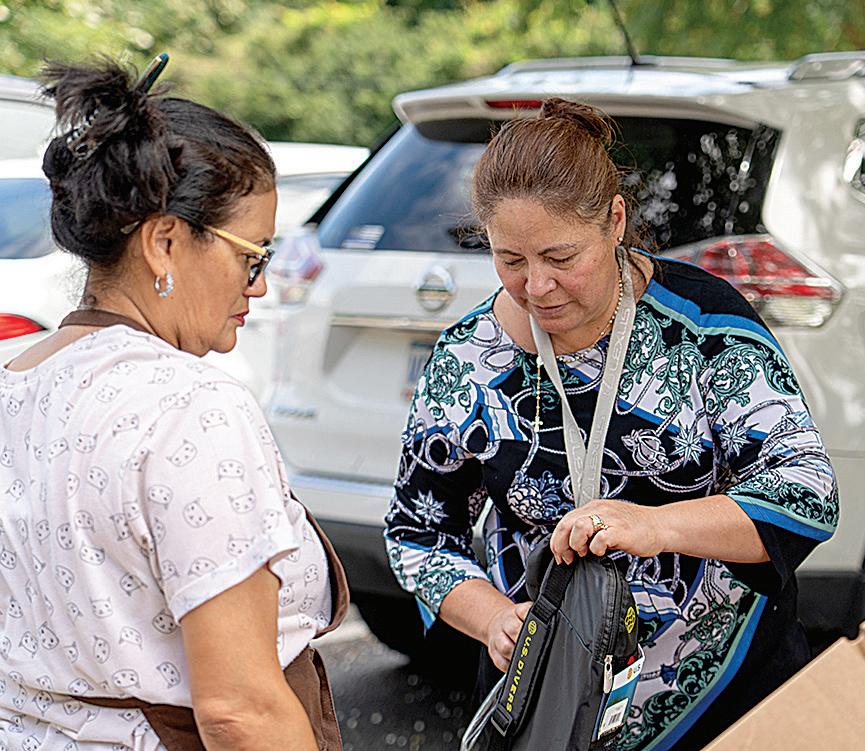
Lupita Nava, lidera no solo la despensa de los miércoles, sino también un banco de comidas para los más necesitados de la parroquia los jueves.
operación semanal de alimentos gratuitos, cuando comenzaron a colaborar con el Departamento de Policía de CharlotteMecklenburg y el Second Harvest Food Bank junto con Casa Marillac. Pero la parroquia debía contar con un mayor número de voluntarios para llevarlo a cabo, así que Lupita comenzó a trabajar para asegurarse de que pudieran conseguir a todos los necesarios para que eso sucediera.
“Cuando ellos no podían más, nosotros tomamos la decisión de continuar con esta actividad para seguir apoyando a la comunidad,” menciona Nava. “No queríamos perder estos recursos.”
El proyecto, ahora en manos de Lupita y los voluntarios durante los últimos 4 años, sigue vivo gracias a ellos.

Desde las 7 de la mañana hasta la 1 de la tarde, muchos miembros de la comunidad, especialmente personas de la tercera edad que no reciben beneficios alimenticios del gobierno, esperan pacientemente en sus vehículos, formados en fila, cada miércoles para recibir una provisión de comida para la semana.
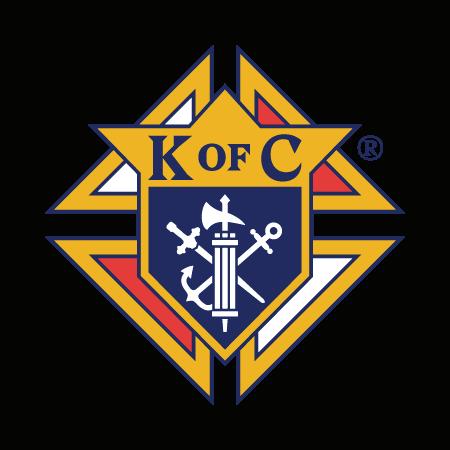
Considere unirse a los más de 2 millones de miembros de la organización fraternal católica más grande del mundo y registrándose en línea hoy en: www.kofc.org/joinus/es
Por tiempo limitado - Membresía en línea GRATISUse el código de promoción (BLESSEDMCGIVNEY)

Según explica Lupita Nava, aunque la provisión de alimentos ha aumentado, se ha visto un mayor número de personas acudiendo a la despensa de los miércoles desde el inicio de la etapa del COVID-19, incluyendo a personas de fuera de la parroquia.
“Mientras que el Señor siga enviando lo necesario, aquí estaremos,” cuenta Nava. Lupita dice que la satisfacción de saber que están ayudando y alimentando a cientos de personas cada semana es algo que no se puede explicar, y es esa satisfacción la que mantiene un voluntariado comprometido semana tras semana. “Te cansas, pero siempre te sientes feliz de
lo que lograste,” dice con una sonrisa Nava. Durante el día, Nava explica que no saben cuántos alimentos recibirán en los camiones, así que confían en Dios para que Él les provea.
“En las mañanas, me pongo a rezar para que el Señor nos dé lo justo y lo necesario,” explica Nava. “Él siempre nos provee.”


La alegría de la resurrección de Cristo puede reparar la tristeza y el malestar generalizados en el mundo actual, afirmó el Papa León XIV.
“En los senderos del corazón, el Resucitado camina con nosotros y por nosotros”, afirmó el Papa el 22 de octubre durante su audiencia general en la Plaza de San Pedro.
“Es el Resucitado quien cambia radicalmente la perspectiva, infundiendo la esperanza que llena el vacío de la tristeza”, dijo.
“Invasiva y generalizada, la tristeza acompaña los días de muchas personas”, dijo en su discurso principal en italiano. “La tristeza le quita sentido y vigor a la vida, que se convierte en un viaje sin dirección y sin significado”.
Se puede ver un escenario similar en el relato del Evangelio de San Lucas sobre los dos discípulos en el camino a Emaús, dijo. “Ellos, desilusionados y desanimados, se alejan de Jerusalén, dejando atrás las esperanzas puestas en Jesús, que ha sido crucificado y sepultado”.
Sin embargo, se encontraron con un desconocido en el camino que los escuchó, “les deja desahogar su desilusión”, dijo el Papa. Una pizca de esperanza se reaviva en sus corazones cuando el desconocido los reprende por ser lentos en creer todo lo que los profetas habían anunciado, “que Cristo debía sufrir, morir y resucitar”.
Solo después de sentarse y compartir el pan con el “misterioso compañero” de viaje, los dos discípulos lo reconocen como Jesús, y él desaparece inmediatamente de su vista, dijo. “Y entonces todo se aclara: el camino compartido, la palabra tierna y fuerte, la luz de la verdad”, dijo el Papa León. “De inmediato se reaviva la alegría, la energía vuelve a fluir en los miembros cansados, la memoria vuelve a ser agradecida. Y los dos regresan deprisa a Jerusalén, para contarlo todo a los demás”.
Sus almas se llenan “de una inesperada y gozosa comprensión: ¡Cristo ha resucitado verdaderamente!”, dijo en inglés. “El Señor desea hacer lo mismo por nosotros, disipando cualquier tristeza y desesperación que podamos sentir”.
“Es verdad, ¡el Señor ha resucitado!”, con hechos, no con palabras, “con su cuerpo que conserva las marcas de la pasión, sello perenne de su amor por nosotros”, dijo el Papa en italiano. “La victoria de la vida no es una palabra vana, sino un hecho real, concreto”.
“Que la alegría inesperada de los discípulos de Emaús sea para nosotros un dulce recordatorio cuando el camino se hace difícil”, dijo. “Es el Resucitado quien cambia radicalmente la perspectiva, infundiendo la esperanza que llena el vacío de la tristeza”.
A pesar de la oscuridad de su pasión, él “testimonia la derrota de la muerte, afirma la victoria de la vida”, dijo. “La historia todavía tiene mucho que esperar en el bien”.
El Señor de los Milagros, también conocido como Cristo de Pachacamilla, el Cristo Morado, Cristo de las Maravillas, el Cristo Oscuro o el Señor de los Temblores, es una imagen del Señor Jesús pintada milagrosamente sobre un muro de adobe ubicado en el Altar Mayor del Santuario de Las Nazarenas en Lima, Perú.
A mediados del siglo XVII los negros de Angola formaron la cofradía de Pachacamilla y levantaron una edificación en donde uno de ellos pintó en la pared la preciosa imagen de Cristo. El 13 de noviembre de 1655 un fuerte terremoto sacudió a Lima y Callao haciendo caer muchos edificios y causando miles de muertos. Todas las paredes de la Cofradía de los angoleños se cayeron, pero el muro de adobe con la imagen del Cristo permaneció en pie perfectamente, lo que fue considerado un verdadero milagro.
Cada año aumentó la fe al que llamaron Señor de los Milagros y hoy en día su procesión por las calles de lima en el mes de octubre congrega a millones de personas de diferentes partes del mundo.
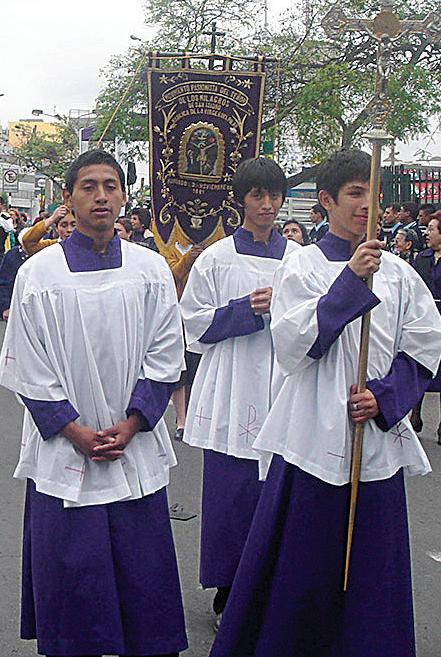
Cada año la procesión del Señor de los Milagros se hace más grande y hermosa. Las andas viejas se han remplazado por andas de plata, las cuales tienen en el monasterio una sala donde se guardan bajo el cuidado de personal especial. La primera procesión del Cristo de Pachacamilla ocurrió en 1687, cuando otro terremoto sacudió a Lima nuevamente.
Es por ello que Sebastián de Antuñano mandó a hacer en lienzo una copia del Cristo que figuraba en el muro y lo sacó en procesión a recorrer las calles de la ciudad. Al conmemorarse el primer aniversario del terremoto del 28 de octubre de 1746, la imagen tomará la costumbre de salir el 28 de octubre, visitando calles, templos, monasterios y hasta ramadas.
En realidad son dos imágenes las que salen en procesión cada mes de octubre: una, el lienzo con la copia del Crucificado del muro, y otra, la de la Virgen de la Nube, devoción ecuatoriana que la madre Antonia trajo al Perú.
Las andas de plata del Señor de los Milagros son llevadas por 32 miembros de la Hermandad de Cargadores del Señor y tienen un soporte de madera de roble. Solamente en plata su peso es de 450 kilos. Los cargadores obedecen a su capataz general y a un subcapataz y están organizados en cuadrillas, cada una con su propio jefe. También hay una hermandad de sahumadoras,
26 DE OCTUBRE – 1 DE NOVIEMBRE
Domingo (Trigésimo Domingo del Tiempo Ordinario): Eclo 35:12-14, 16-18, Sal 34:2-3, 17-18, 19, 23, 2 Tim 4:6-8, 16-18, Lc 18:9-14
Lunes: Rom 8:12-17, Sal 68:2 y 4, 6-7ab, 20-21, Lc 13:10-17
Martes (Fiesta de San Simón y San Judas, Apóstoles): Ef 2:19-22, Sal 19:2-3, 4-5, Lc 6:12-16
Miércoles: Rom 8:26-30, Sal 13:4-5, 6, Lc 13:22-30
Jueves: Rom 8:31b-39, Sal 109:21-22, 2627, 30-31, Lc 13:31-35
Viernes: Rom 9:1-5, Sal 147:12-13, 14-15, 19-20, Lc 14:1-6
Sábado (Solemnidad de Todos los Santos): Ap 7:2-4, 9-14, Sal 24:1bc-2, 3-4ab, 5-6, 1 Jn 3:1-3, Mt 5:1-12a
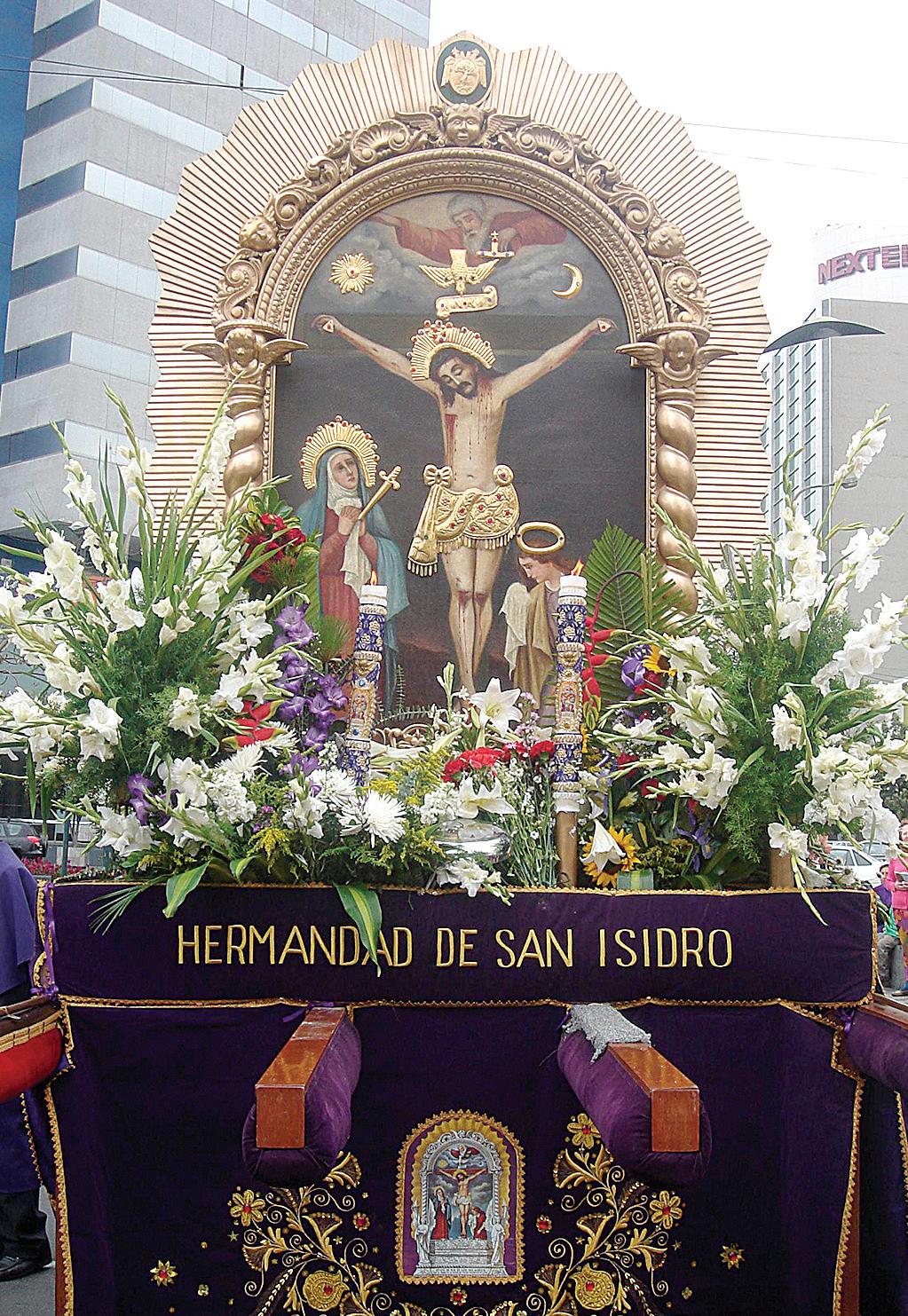
Cada año aumentó la fe al que llamaron Señor de los Milagros y hoy en día su procesión por las calles de lima en el mes de octubre congrega a millones de personas de diferentes partes del mundo.
las cuales portan antiguos y ricos sahumadores de plata, y una de cantoras; finalmente hay un martillero que da la orden de detenerse y de continuar la marcha de la procesión. Todas estas personas visten de color morado. La anda sale de su sala especial en el monasterio de las Nazarenas por la puerta grande que da a la avenida Tacna e ingresan al templo. Allí la imagen recibe el saludo y el amor de miles de devotos.
2-8 DE NOVIEMBRE
Domingo (Conmemoración de Todos los Fieles Difuntos – Día de los Difuntos): Sab 3:1-9, Sal 23:1-3a, 3b-4, 5, 6, Rom 5:5-11 o Rom 6:3-9, Jn 6:37-40
Lunes: Rom 11:29-36, Sal 69:30-31, 33-34, 36, Lc 14:12-14
Martes (Memoria de San Carlos Borromeo, Obispo): Rom 12:5-16ab, Sal 131:1bcde, 2, 3, Lc 14:15-24
Miércoles: Rom 13:8-10, Sal 112:1b-2, 4-5, 9, Lc 14:25-33
Jueves: Rom 14:7-12, Sal 27:1bcde, 4, 1314, Lc 15:1-10
Viernes: Rom 15:14-21, Sal 98:1, 2-3ab, 3cd-4, Lc 16:1-8
Sábado: Rom 16:3-9, 16, 22-27, Sal 145:23, 4-5, 10-11, Lc 16:9-15
9-15 DE NOVIEMBRE
Domingo (Fiesta de la Dedicación de la Basílica de Letrán en Roma): Ez 47:1-2, 8-9, 12, Sal 46:2-3, 5-6, 8-9, 1 Cor 3:9c-11, 16-17, Jn 2:13-22
Lunes (Memoria de San León Magno, Papa y Doctor de la Iglesia): Sab 1:1-7, Sal 139:1b-3, 4-6, 7-8, 9-10, Lc 17:1-6
Martes (Memoria de San Martín de Tours, Obispo): Sab 2:23–3:9, Sal 34:2-3, 16-17, 18-19, Lc 17:7-10
Miércoles (Memoria de San Josafat, Obispo y Mártir): Sab 6:1-11, Sal 82:3-4, 6-7, Lc 17:11-19
Jueves (Memoria de Santa Francisca Javier Cabrini, Virgen): Sab 7:22b–8:1, Sal 119:89, 90, 91, 130, 135, 175, Lc 17:20-25
Viernes: Sab 13:1-9, Sal 19:2-3, 4-5ab, Lc 17:26-37
Sábado: Sab 18:14-16, 19:6-9, Sal 105:2-3, 36-37, 42-43, Lc 18:1-8
people of Yukon-Kuskokwim Delta coast in your prayers, especially the people of Kipnuq and Kwigillingok,” naming two communities that have been especially impacted by the storm.
ANCHORAGE — Catholic dioceses in Alaska are calling for prayer and support after flooding from a recent typhoon devastated several coastal communities.
The remnants of Typhoon Halong struck the state’s western coast over the Oct. 11-12 weekend, killing at least one. As of presstime Wednesday, two other people remain missing, and hundreds of stranded residents were airlifted to Anchorage for safety after many watched their homes float away.
According to state officials, some 1,800 Alaska residents from just under 50 communities have been displaced.
In an Oct. 14 letter posted to Facebook, Bishop Steven J. Maekawa of Fairbanks asked parishioners to “pray for the people of western Alaska who were affected by the typhoon and storms this past week. For those who lost their lives and for their families and friends. For those whose homes and businesses were destroyed or damaged. For those communities that are without power, heat and water. For the people working in the rescue and relief efforts.”
The Archdiocese of Anchorage-Juneau has also urged prayer and donations, asking faithful in an Oct. 16 Facebook post to “please keep the
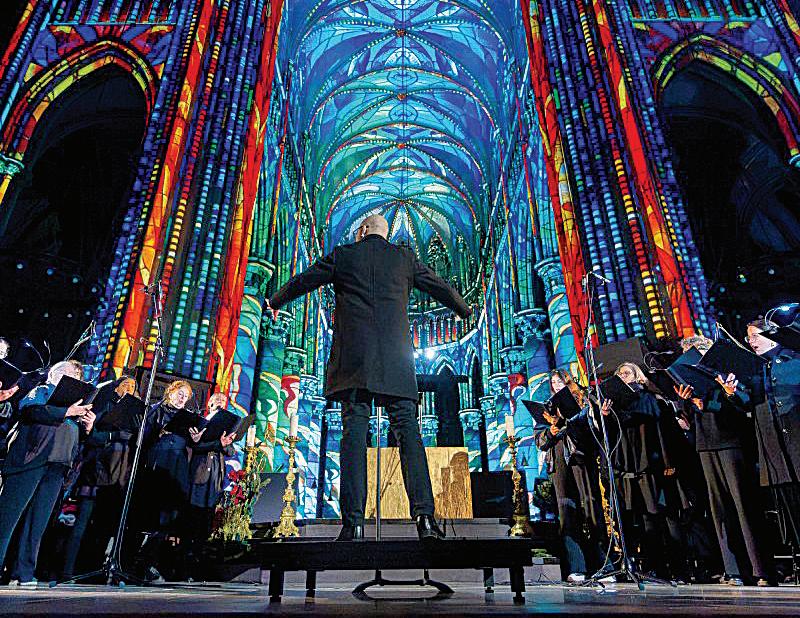
ST. PAUL, Minn. — A production that has captivated crowds in cathedrals across Europe – including in France, Germany and Spain – will make its United States debut at the Basilica of St. Mary in Minneapolis Oct. 31. The production at the church will run through mid-February.
Held indoors, the Luminiscence production will feature a 360-degree video projection onto the basilica’s walls as narration provides the church’s history in Minneapolis. Accompanying the projection and narration will be a live choir, organ and instrumental music.
As the basilica looks to 2026, when it will celebrate the 100th anniversary of its
designation as the first U.S. basilica, Father Daniel Griffith said excitement is building for Luminiscence’s kickoff event in the U.S.
“We’re excited to welcome Luminiscence to The Basilica of St. Mary, opening our doors to everyone and inviting them to experience the sacred in a new way,” Father Griffith said in a statement.
“At a moment when many are searching for deeper meaning, this immersive storytelling experience offers a unique path to reflection, connection and a renewed sense of community,” he said. Each production runs just under an hour, according to organizers.
WASHINGTON, D.C. — Archbishop Timothy P. Broglio of the U.S. Archdiocese for the Military Services said Oct. 17 the U.S. Army has canceled all religious support contracts for Army chapels, “including those for religious educators, administrators and musicians.” He argued this places “an insurmountable restriction on the free exercise of religion.”

In a letter addressed to members of the military archdiocese, which he said will also be sent to all members of Congress, Archbishop Broglio said, “For those who attend Mass, visit chapel offices or participate in faith formation on a U.S. Army installation, you likely
noticed that beginning on Sunday, 5 October, 2025, contract services and contractor offices were dark, and music was absent during Mass.”
The changes are not due to the government shutdown, he explained. A memorandum issued in March by the U.S. Army Installation Management Command “directed the cancellation of all chapel contracts” for coordinators of religious education, Catholic pastoral life coordinators and musician contracts “across the U.S. Army.”
A spokesperson for the Department of Defense directed OSV News to the U.S. Army for comment. The U.S. Army did not immediately respond to an inquiry.
Please pray
the following deacons who died during the month of October:
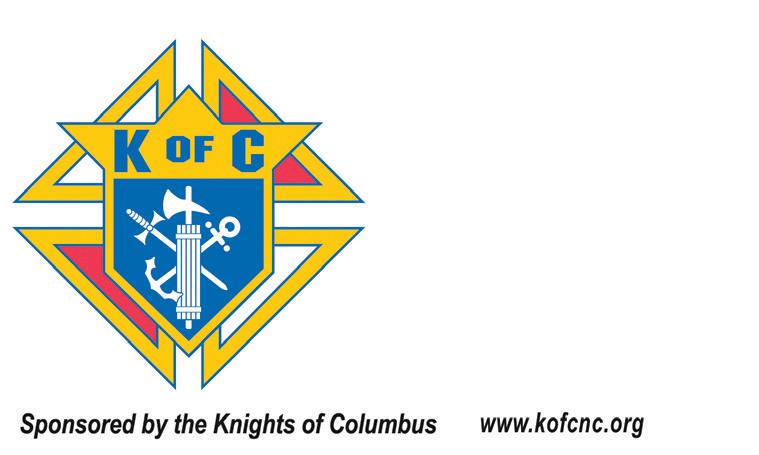
Sponsored by the Knights of Columbus


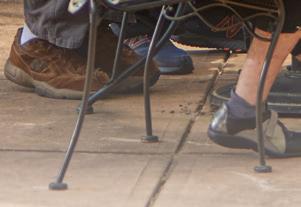
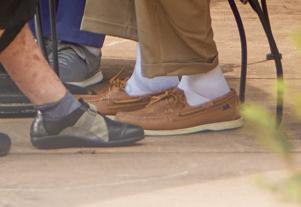
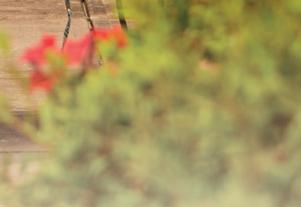




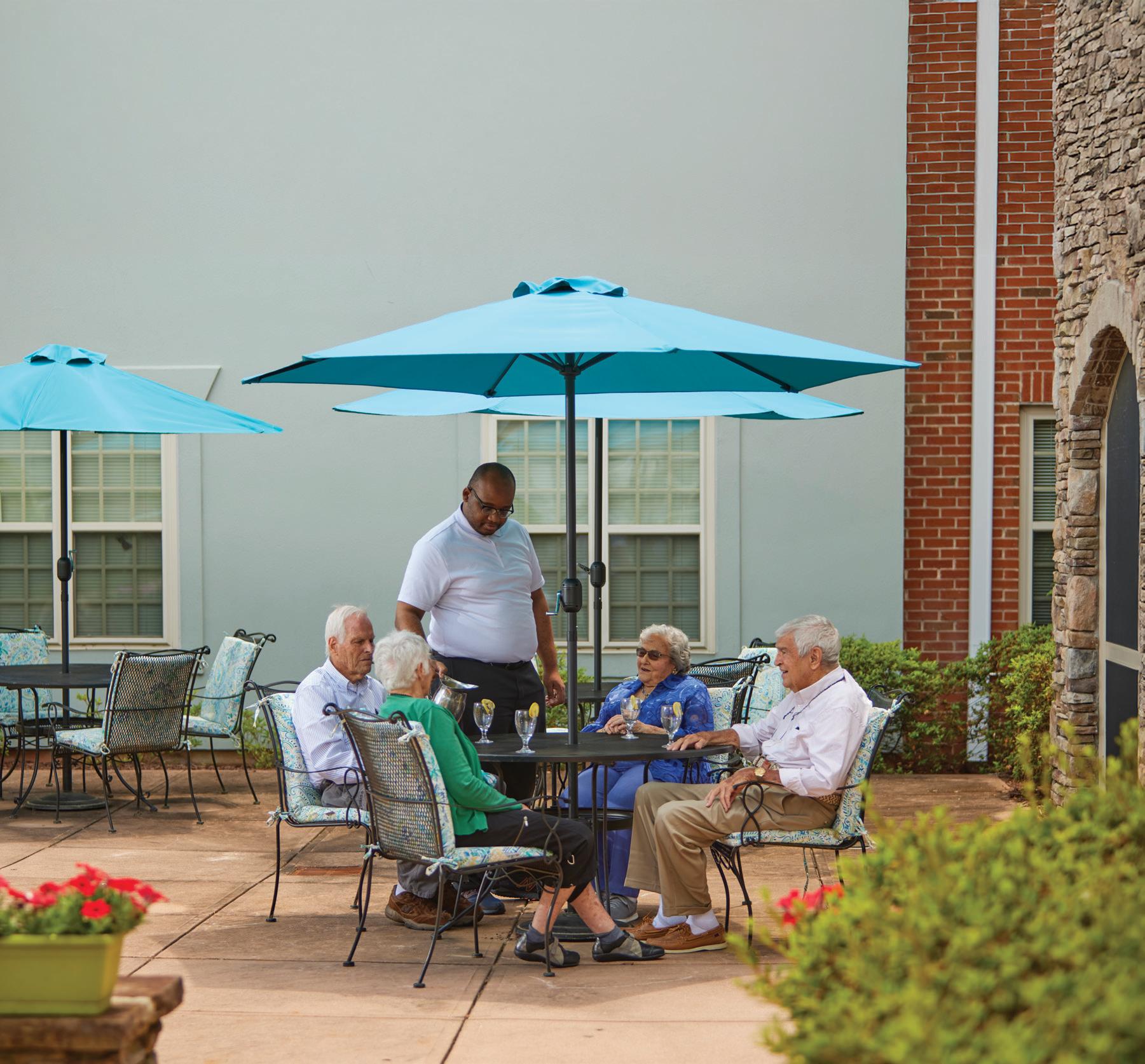
At Pennybyrn’s Melvin and Ruth Witcher Adult Day Center, every detail is designed to enrich the lives of older adults while o ering support and respite for their caregivers. Our safe, welcoming and vibrant environment o ers more than just care— it inspires joy, sparks learning and builds meaningful social connections. A thoughtfully planned variety of daily activities promotes better overall health, greater emotional well-being and a higher quality of life.

JUNNO AROCHO ESTEVES OSV News
VATICAN CITY — When Pope Leo XIV raised three women and four men to the altar Oct. 19, he canonized a diverse group of religious and lay men and women, all bound by the virtue of holding on to their faith amid personal, spiritual and external challenges. The canonizations, which were announced by the Vatican June 13, elevated to sainthood seven candidates who hail from Venezuela, Turkey, Papua New Guinea and Italy.
St. María Carmen Elena Rendiles Martínez, who was born without a left arm, overcame physical challenges and founded a religious congregation.
St. Maria Troncatti, an Italian Salesian, dedicated her life as a missionary to Indigenous peoples in the Amazon rainforest, earning her the informal title of “doctor of the jungle.”
Others, such as St. Ignazio Choukrallah Maloyan and St. Peter To Rot, were martyred for their faith. Among the most well-known is St. Bartolo Longo, a former Satanist priest who, after his conversion, dedicated his life as a Dominican tertiary to promoting the rosary and Marian devotion.

Among those Pope Leo XIV canonized Oct. 19 are (from left) Blessed Bartolo Longo, an Italian lawyer and lay Dominican tertiary; Blessed Peter To Rot, a married father and lay catechist from Papua New Guinea; Blessed Vincenza Maria Poloni (born Luigia Poloni), an Italian religious sister and co-founder of the Sisters of Mercy of Verona; and Blessed Maria Troncatti, a Salesian nun and nurse who served as a missionary in the Amazon.
For Dominican Father Joseph Anthony Kress, promoter of the rosary for the Province of St. Joseph and associate director of the Dominican Friars Foundation, the example of the challenges faced by St. Longo and the other six sainthood candidates shows “that this earthly pilgrimage is not a sanitized experience.”
Father Kress said that like Christ, who stumbled and fell “on His way to making that supreme sacrifice,” Christian lives
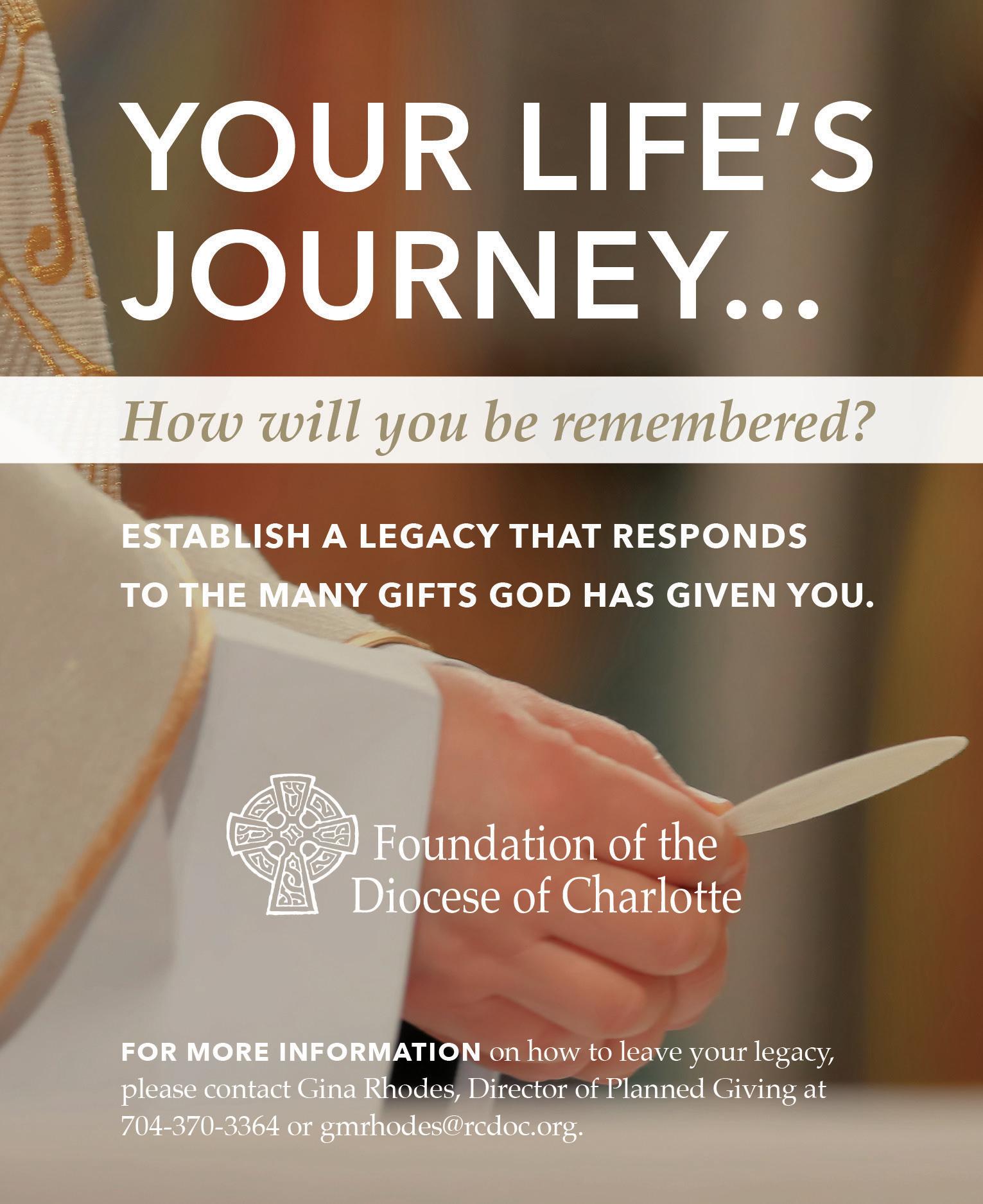
reflect the same struggle.
“We don’t need to try to perfect or sanitize our lives before we offer them to Jesus, but we can invite Him into the suffering and the struggle,” he said.
“All of these saints experienced different elements of struggle throughout their lives: physical struggles, psychological struggles, spiritual desolations. But in the midst of all of that, they maintained a constant relationship with the Lord and invited Him
n St. María Carmen Elena Rendiles
Martínez was a Venezuelan religious sister and founder of the Servants of Jesus of Caracas. Born without a left arm, her life exemplified overcoming physical challenges. She established the Servants of Jesus of Caracas in 1965, dedicating her community to education and spiritual outreach. She died May 9, 1977, in Caracas. She is Venezuela’s first female saint.
n St. José Gregorio Hernández Cisneros was a Venezuelan physician and scientist known widely as the “Doctor of the Poor.”
Born Oct. 26, 1864, in Isnotú, Venezuela, he was instrumental in introducing modern medical science to the country and founded its first bacteriology laboratory. A devoted layman and Franciscan tertiary, he provided free medical care to the poor throughout his career. He died June 29, 1919, in Caracas after being struck by an automobile while running an errand for a sick patient.
n St. Ignazio Choukrallah Maloyan was the Armenian Catholic archbishop of Mardin.
Born April 19, 1869, in Mardin, Ottoman Empire (now Turkey), he was consecrated as archbishop in 1911. During the Armenian Genocide in 1915, he was arrested by Ottoman authorities who demanded he renounce his Christian faith and convert to Islam. He refused and was subsequently tortured and martyred on June 11, 1915.
n St. Peter To Rot was a married father and lay catechist from Papua New Guinea. Born in 1912 in Rakunai, he took on a vital leadership role when Japanese forces imprisoned missionaries during World War II. He became the sole spiritual guide for his community and strongly defended Christian
into those moments.”
“That’s where holiness is,” Father Kress added. “Holiness, I think, is the most profound when there’s a struggle present.”
Another notable aspect of some of the candidates is the fact that they were lay members of the Catholic Church. St. Longo was a lay member of the Dominican order, while St. José Gregorio Hernández Cisneros of Venezuela was a Franciscan tertiary. St. Peter To Rot, a martyr from Papua New Guinea, was married and a lay catechist.
Father Kress told OSV News that those like St. Longo and St. Hernández prove that “we can still be inspired by the great charisms of these religious orders in the Catholic Church, and to be unafraid to pursue that; to be unafraid of committing to that.”
“We live in a society, man, that is just so fraught and afraid to make any kind of commitment to a specific thing,” he said. “And some of these saints who have been tertiaries have made those commitments, and it’s a great message of hope and confidence in the Lord, and confidence in our individual humanity and personalities to say, ‘This charism is something that attracts me, and I want to participate in that in ways that make sense.’”
marriage against the Japanese-promoted return of polygamy. For this opposition, he was arrested. He was martyred in a Japanese prison camp in Rakunai, Papua New Guinea, in July 1945.
n St. Vincenza Maria Poloni (born Luigia Poloni) was an Italian religious sister and co-founder of the Sisters of Mercy of Verona. Born Jan. 26, 1802, in Verona, she dedicated her life to works of charity. She helped establish the congregation in 1840 to care for the sick, the poor and orphans, emphasizing merciful love for the marginalized. She famously referred to the poor as “our masters.” She died Nov. 11, 1855, in Verona.
n St. Maria Troncatti was a Salesian nun and nurse who served as a missionary in the Amazon rainforest. Born Feb. 16, 1883, in Corteno Golgi, Italy, she arrived in Ecuador in 1922 and spent nearly five decades working among the Indigenous Shuar people. Known as the “Doctor of the Jungle,” she ministered to physical and spiritual needs, notably promoting the dignity of women and reconciliation among tribal groups. She died Aug. 25, 1969, in Sucúa, Ecuador, in a small plane crash while traveling to a retreat.
n St. Bartolo Longo was an Italian lawyer and lay Dominican tertiary. Born Feb. 10, 1841, in Latiano, he experienced a dramatic conversion after a period of involvement with a spiritualist cult, which included being consecrated as a satanic priest. He devoted his life to promoting the rosary and serving the materially and spiritually poor peasants near Pompeii, where he founded the Shrine of Our Lady of the Rosary of Pompeii and several charitable institutions for children. He died Oct. 5, 1926, in Pompeii.
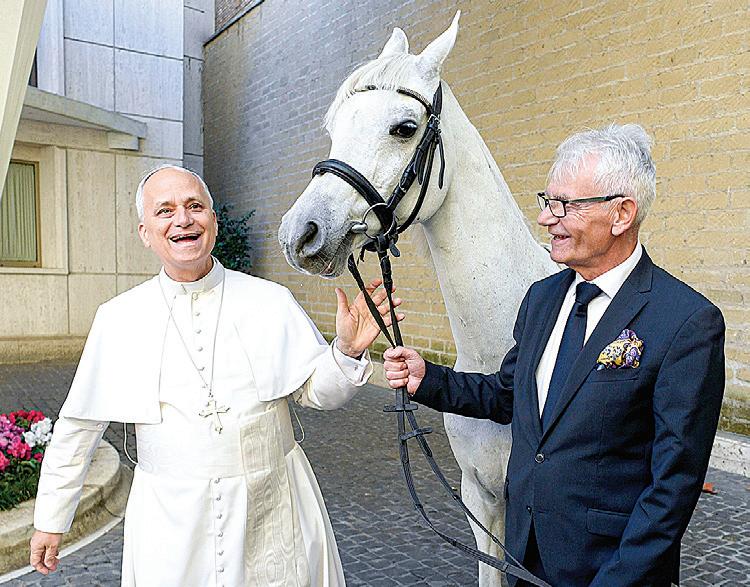
VATICAN CITY — It was a general audience unlike any other at the Vatican Oct. 15, when Pope Leo received an unexpected, and rather majestic, gift: a purebred Arabian horse named Proton.
The striking white stallion was presented by Polish horse breeder Andrzej Michalski and his family, who traveled from their seaside stable in Kolobrzeg, Poland. Michalski said the inspiration struck after seeing a photo of Pope Leo riding a horse as a missionary in Peru.
Proton’s pedigree is as impressive as his presence: Sired by an American stallion and foaled by a mare from a Jordanian princess, he was raised with care by the Michalskis, a devout Catholic family whose farm is known for show jumping and equestrian therapy.
After the audience, Proton was escorted to stables at the papal estate of Castel Gandolfo – ready, perhaps, for the pope’s next horseback ride.
VATICAN CITY — Sacramental marriage and traditional family life increase joy in the good times, give strength during hard times and are a path to true holiness, Pope Leo XIV said.
Marking the 10th anniversary of the canonization of Sts. Louis and Zélie Martin, the parents of St. Thérèse of Lisieux, Pope Leo said the couple “bears witness to the ineffable happiness and profound joy that God grants, both here on earth and for eternity, to those who commit themselves to this path of fidelity and fruitfulness.”
The pope’s comments came in a message to Bishop Bruno Feillet of Séez, France, the home diocese of the Martin family. The message was

released at the Vatican Oct. 18, the date of the anniversary of the Martins becoming “the first couple to be canonized as such,” the pope said.
ROME — Syrian Archbishop Jacques Mourad, once held captive by the Islamic State group for five months, received the prestigious St. John Paul II Award at a Vatican ceremony Oct. 18. The honor, presented by the John Paul II Foundation, recognizes individuals committed to peace and interreligious dialogue.
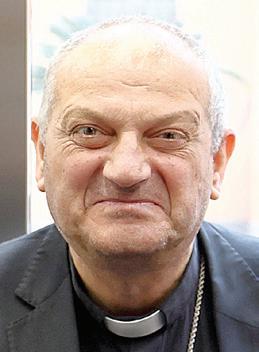
Archbishop Mourad, now leading the Archdiocese of Homs, said the late pope’s witness during World War II remains a vital guide during Syria’s 14-year conflict.
Chosen nearly unanimously, Archbishop Mourad was praised for continuing his work in Christian-Muslim dialogue despite personal suffering. A former monk of the Deir Mar Musa community, he upheld a legacy of hospitality and coexistence – even during war.
In a conversation with OSV News, Archbishop Mourad stressed that real peace can only come through prayer and dialogue, not violence. He also expressed deep concern over Syria’s ongoing corruption and instability, saying, “Nothing has changed” for the better in Syria, not just for Christians, but for the entire population.”
VATICAN CITY — While the number of Catholic priests and religious continues to decline, the number of lay missionaries, catechists and
permanent deacons continues to increase, according to the news agency Fides.
In anticipation of the celebration Oct. 19 of World Mission Sunday, the Vatican’s missionary news agency shared statistics about the Catholic population, Church personnel and the works they are engaged in.
In a message released Oct. 13, Pope Leo XIV, who served for decades as a missionary in Peru, encouraged all Catholics to mark World Mission Sunday with their prayers and financial support for the Church’s missionary work.
The number of Catholics in the world was just over 1.4 billion as of June 30, 2023, Fides reported. That represented an increase of 15.8 million Catholics over the previous year, an increase in every continent, including Europe, which previously had reported a decrease in the Catholic population from 2021 to 2022. The continents with the largest increases were Africa, with more than 8.3 million baptisms, and the Americas with close to 5.7 million baptisms.
— OSV News and Catholic News Service

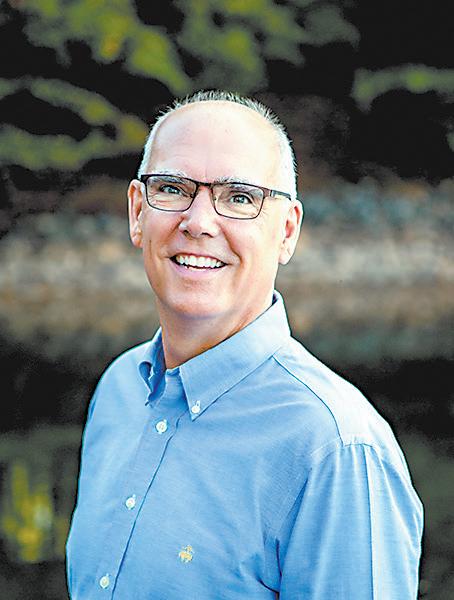

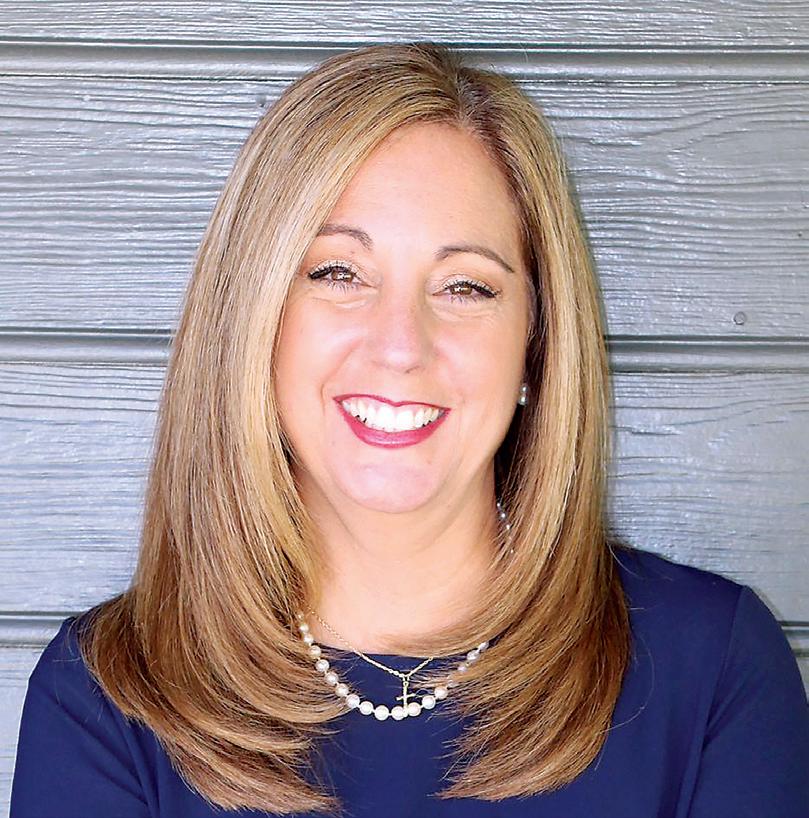

Kathryn Heim
Last year I somewhat unintentionally started a C.S. Lewis book club in my parish. It originated when a friend and fellow parishioner mentioned that she would like to begin reading Lewis for the first time, as our pastor is very fond of quoting and referencing him.
Loving Lewis’ work as I do, I offered to read the books along with her so that she would have someone to discuss them with and also have some guidance on which ones to read and in what order. We quickly began inviting other parishioners to join us, and by the end, we had two separate groups meeting in the morning or in the evening to discuss our selections. We read more than a dozen of Lewis’ books in a year and a half, ranging from his autobiographical work to apologetics to a sampling of his fiction, including three of the books from his beloved Chronicles of Narnia series.
I’ve studied Lewis’ work a great deal on my own previously, but the ability to come together with others and share insights and reactions was truly special. It allowed me to not only revisit works that I love, but also to view them through fresh eyes and gain new insights from the rest of the group.
Book clubs seem to be rising in popularity. Even with my friends and family who don’t belong to any specific club, our standard form of initiating chit chat these days is, “So, what are you reading right now?”
With the advent of audiobooks, e-readers and reading apps that can be downloaded to your phone, it’s easier than ever to consume a lot of content even if you don’t think of yourself as a reader or struggle to find leisure time.
A book club can help direct the choice of books from an abundance of options. They also provide an opportunity for community, which is so sorely needed in our culture today.
It can be hard to find commonalities to talk about, sometimes with even the people closest to us in our families, never mind co-workers or new acquaintances. Trying to discuss the news or current events can be like walking into a minefield. Music, movies and television shows have become so numerous and niche that it’s increasingly rare to find someone who is familiar with the same content that you are.
Even as our world has created more and more ways to connect, social isolation and depression are on the rise. We have more ways to stay in touch, yet less to discuss with each other – and an ever greater need to talk and bond with others. Books might seem just as vast a landscape as other media. But with centuries of content that has been refined into acknowledged classics and Great Books, it’s more like navigating a known territory where others have already left guideposts for us.
Rather than chasing the latest trend or viral phenomenon, one can easily find lists of foundational texts in Western, and even
Here are the books that will be discussed each month by the book club at Sacred Heart Parish in Salisbury:
n October – “Orthodoxy” by G.K. Chesterton
n November – “The Hobbit” by J.R.R. Tolkien
n December – “A Christmas Carol” by Charles Dickens
n January – “The Great Divorce” by C.S. Lewis
n February – “The Hiding Place” by Corrie ten Boom
n March – “The Reed of God” by Caryll Houselander
n April – “A Prayer Journal” by Flannery O’Connor
n May – “A Canticle for Leibowitz” by Walter M. Miller Jr.
specifically Catholic, culture. Reading with others also forms threads that help tie us together for years to come, forming tighter communities and social bonds. Having common references, inside jokes, etc., creates a new language for us to communicate with.
‘A TWITCH UPON THE THREAD’
These threads that books create reminds me of a quote from one of G.K. Chesterton’s Father Brown short stories. The amateur priest detective talks about how he “caught (the thief) with an unseen hook and an invisible line which is long enough to let him wander to the ends of the world and still to bring him back with a twitch upon the thread.”
This line is also referenced in Evelyn Waugh’s novel “Brideshead Revisited,” in discussing how God keeps hold on the prodigal sons and daughters who have strayed from their faith and yet can be brought back with “a twitch upon the thread.”
I grew up reading books like the Chronicles of Narnia and “The Lord of the Rings,” long before I was Catholic, and I often think that those stories were the threads God twitched to bring me to Him.
When I finally began learning about Jesus Christ, I found that I already knew Him in the form of Aslan the Lion.
When I started to learn about Christian virtues, they were already familiar because I had seen them demonstrated in such characters as Frodo, Sam and Gandalf. It was books that first stirred my longing for God.
Inspired by the success of the C.S. Lewis group, I recently started a wider book club for my parish of Sacred Heart in Salisbury based on foundational and popular texts.
My hope is to build a deeper sense of community and communion among fellow parishioners by sharing and discussing great works together. If anyone in the wider diocese is interested in reading with us, you can find our book list and resources on Sacred Heart’s website (www.salisburycatholic.org) under Faith Formation.
KATHRYN HEIM is an author, wife and mother living outside Salisbury, where she gardens, raises chickens, experiments with cooking and reads too many books. Find her work at www. kathrynheim.com.
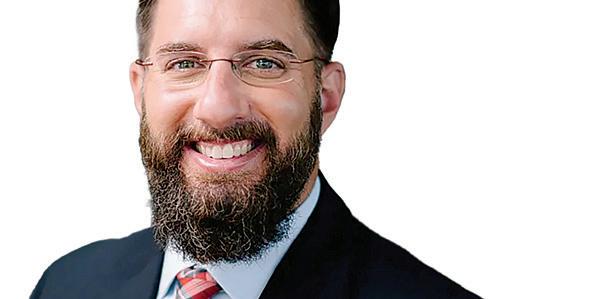
Why do we suffer? How does God allow it? Where is God when we hurt? These are typical questions of theodicy: the attempt to account for God’s goodness in the midst of evil.
It is tempting to make such matters into an intellectual puzzle, trying to fit jagged pieces together into a pleasing whole. The problem is that evil is more than a piece to fit in; it causes pain, loss, exasperation, disorientation, sorrow. Rational answers are no balm for the scourges of evil. Job knew this. It is why he dismissed his wellmeaning friends, who were all too eager to explain the reasons for evil to him.
Sarah Clarkson confronted this challenge herself, both as a theologian who wanted to explore theodicy and as someone who, beginning in her teenage years, suffered from debilitating bouts of obsessive compulsive disorder.
Her ailment manifested itself in her mind, where she was beset by uncontrollable images of tragedy and violence that were not present to her senses. She saw terrible things happen to loved ones, she saw things fall apart, she saw darkness in the middle of the day. It was consuming, and she suffered.
She wanted to account for this evil. So she set about writing a theological book, but that led nowhere. She was trying to account for evil through explanation and reasons: Why? How? Where?
TWO NARRATIVES: DARKNESS AND LIGHT
Then she changed her approach, both to writing and to encountering her suffering. She could not fully control what her mind conjured up. Just as uncontrollable, though, were the moments and images and experiences of beauty that she encountered in her life, both in large and small ways.
She came to see that these were two narratives vying for her allegiance: one narrative of darkness, another of light. One was the constant truth, while the other was the aberration.
She began to practice trusting the story of beauty: “My deep belief is that beauty has a story to tell, one that was meant by God to speak to us of His character and reality, meant to grip our failing hands with hope. We know God when we behold His beauty, when His goodness invades the secret rooms of our hearts. To believe the truth that beauty tells: this is our great struggle from the depths of our grief. To trust the hope it reaches us to hunger toward: this is our fierce battle. To craft the world it helps us to imagine: this is our creative, deathdefying work. … Beauty and brokenness told me two different stories about the world. I believe that Beauty told true.”
Clarkson’s book, “This Beautiful Truth: How God’s Goodness Breaks into Our Darkness,” is a remarkable corrective to our persistent urge to “make sense” of evil and suffering. Her proposal is rooted in the deeply Christian conviction that God comes to us in Christ, entering into our lives and redeeming from within. The challenge, of course, is trusting in His goodness, oftentimes despite evidence to the contrary.
Clarkson herself testifies to this struggle: “Over and over I dismissed beauty as having any real bearing on my spiritual hunger or the larger story of my faith. Those instances of knowing seemed such small, ordinary things – powerful yet fleeting. And I had been trained by the culture around me, even that of my Church, to dismiss such trivialities as imagination or emotion; art or music or the joy I felt in nature were frivolous things, pleasant in their way but incapable of bearing Truth.”
Her readable, delightful, illuminating book is also demanding. It is demanding not to read but to apply to one’s own life. Dare we trust the beauty that we witness, that we experience, that has come to us? Dare we believe that God’s beauty redeems darkness and suffering? Dare we pledge ourselves to beauty as truth?
LEONARD J. DELORENZO, PhD, is professor of the practice in the McGrath Institute for Church Life and concurrent professor in the Department of Theology at the University of Notre Dame. Find him online at www.leonardjdelorenzo.com.

The first time I was in an in-patient locked psychiatric unit, I was overwhelmed by the amount of suffering I saw in the people there.
While conversations about mental health are fairly common, the experience and suffering of serious mental illness – of psychosis, detachment from reality and life-threatening impulsivity – were completely new for me. My heart was filled with compassion and pity for the men and women on the unit for whom every single day was a fight to stay alive.
But I wasn’t on the unit as a health care provider or minister. I was there because I, too, was suffering more than I ever thought possible.
My mental health symptoms have led to diagnoses of post-traumatic stress disorder (PTSD) and dissociative identity disorder (DID), which was formerly known as multiple personality disorder. Since that first time when I was hospitalized, I have been in treatment and hospitalized three more times. I take medication and have been in therapy for years, both with varying degrees of success.
I try to remain rooted in my identity as a beloved daughter of God, but my symptoms impact nearly every aspect of my life. One of the most painful aspects of my mental illness – and this is true for many Catholics I’ve met who experience similar symptoms – is the impact it has on the ability to practice our faith.
When I first started experiencing symptoms of mental illness, I was in formation to become a religious sister, praying literally hours a day, participating in daily Mass, praying the Liturgy of the Hours and making a daily holy hour. Now, I can barely close my eyes long enough to say a prayer before meals before my nervous system kicks into overdrive, sensing danger and pushing my brain and body into a flashback.
Many well-meaning people have recommended spiritual practices to me, picking up on the fact that mental illness can easily disrupt someone’s spiritual life. Regular confession and Communion, praying the Rosary or St. Michael Prayer, novenas to Sts. Dymphna and Jude, and regularly using holy water are all beautiful expressions of trust in God’s goodness and the reality that all the saints in heaven intercede for our good. But spiritual practices alone cannot heal mental illness. Only God can do that, and only if He wills it.
THE PURPOSE OF SUFFERING
One of the greatest gifts Catholicism has to offer those of us who experience mental illness is not chaplets or devotions, but a framework for understanding our pain and suffering – and the strong conviction that it will not be in vain. This belief, when taken to heart, can literally be lifesaving. Suffering has purpose within the Catholic worldview. Jesus is especially close to those who suffer because we are participating in the very same experience
that won our salvation. When we suffer, we have an opportunity to be co-redeemers with Christ, rising above the despair the evil one wants for us, and trusting completely in the Father even when it seems we have no reason to trust.
This kind of belief is only accessible to a rational mind grounded in faith, though. Rationality and logic are often not accessible to people who experience mental illness. That’s where another gift of the Catholic worldview comes into play in a lifesaving way: accompaniment.
People who love someone who is mentally ill also suffer from the effects of their mental illness. It can be confusing and excruciating to love someone who experiences such existential pain and who may engage in self-destructive behaviors, unsure how to ease their suffering or even to keep them safe.
PRAY, SUFFER ON THEIR BEHALF
In the Church, we do not live or die on our individual faith alone. We are united with one another, in Christ, and we can cling to one another’s faith in the darkest of moments when our own faith fails.
In practice, this means being able to sit with those who experience mental illness, even in the unbelievable darkness and irrationality that they may experience, without attempting to fix it.
Mental illness can be extremely isolating, and the lies that go along with mental illness can quite literally kill those whose minds betray them. Someone who is grounded in reality and God’s love can be a life-saver. Sitting with someone in their pain without looking away or dismissing it, even when it doesn’t make sense or is frightening, and presenting that suffering to God as an offering, takes what seeks to kill and makes it life-giving.
Someone suffering from mental illness may not be able to find meaning in their suffering by offering it along with Christ’s sacrifice at the Mass or through prayer and fasting. But if you love someone who is experiencing mental illness, you can pray and suffer on their behalf, accompanying them through the dark valleys to the light, even if they cannot fully experience that light on this side of heaven.
If you or someone you love is experiencing mental illness, there is hope. Cling to Jesus and the sacraments, find consolation in the Blessed Mother and the saints, pray for one another, and remain grounded in the knowledge that God will not allow suffering to be in vain. He will work through our wounds, which will be the very places He fills with grace to save us.
One closing word: If you or someone you love is unsafe due to mental illness, please do not hesitate to reach out for help. Contact emergency or professional services to maintain safety, such as the nearest emergency room or call or text 988 for the national suicide and crisis hotline.
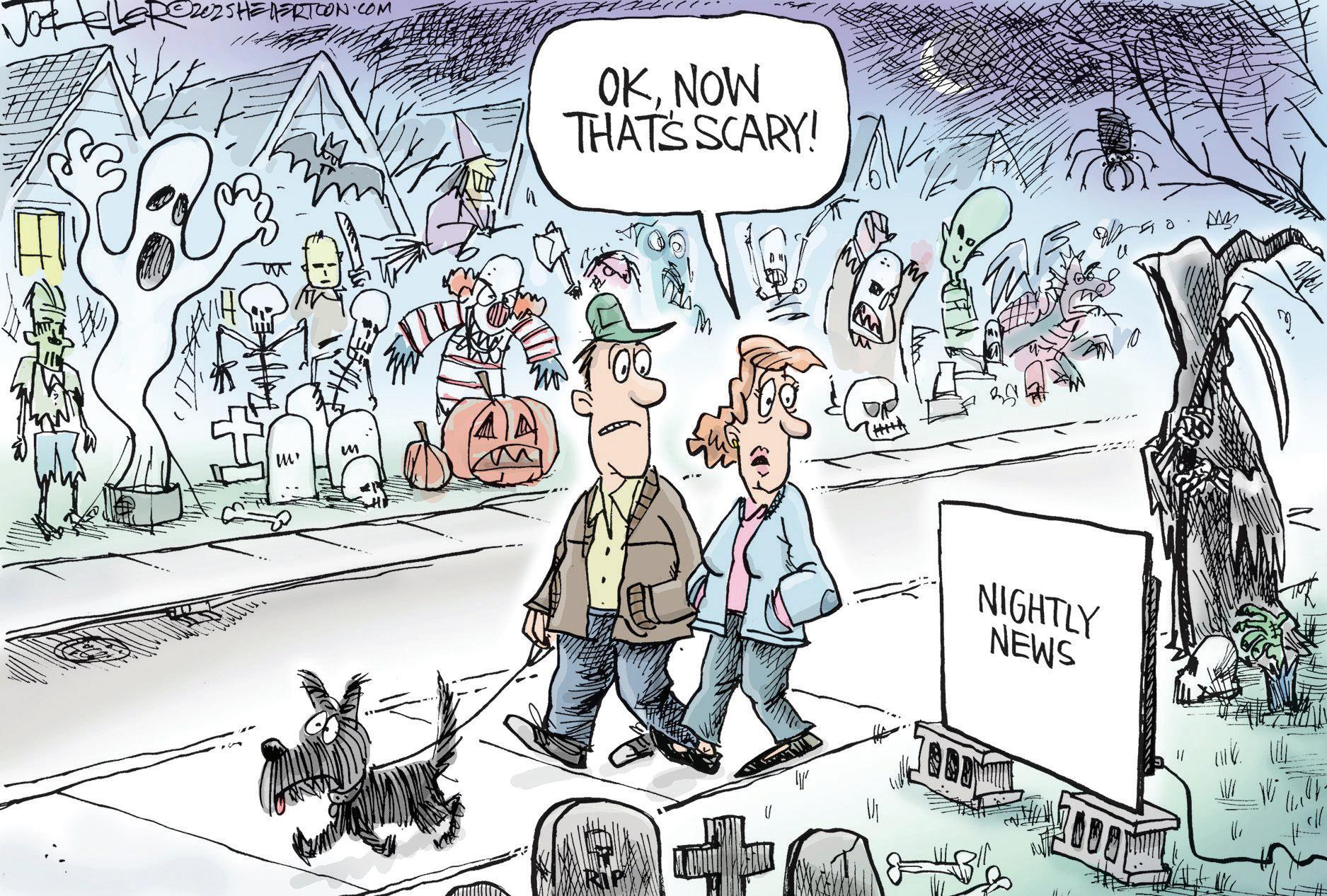
Most-read stories on the web
‘Sacramental marriage and traditional family life increase joy in the good times, give strength during hard times and are a path to true holiness.’
Pope Leo XIV
From online story: “Marriage is a ‘noble, exalted’ vocation, path to holiness, pope says”

The Catholic News Herald reached the Facebook and Instagram feeds of more than 750,000 people in English and Spanish last month. The most talked about post? Coverage of a Holy Trinity student’s inspiring touchdown. Join the conversation: www. facebook.com/CatholicNewsHerald
On YouTube in October so far, videos produced by the Catholic News Herald have been viewed more than 6,000 times. The most popular video? Holy Trinity Middle School student’s touchdown.
Over the past 30 days through Oct. 22, 29,000 visitors to www.catholicnewsherald.com have viewed a total of 49,000 pages. The top 10 trending headlines are:
n Touchdown moment melts hearts, fulfills dream ........................................................................ 3,881
n Chapel of the Little Flower to open for Traditional Latin Masses Oct. 5 1,561
n Animals blessed in honor of St. Francis 1,254
n Respect Life Sunday 994
n Music director shares rare gift with Our Lady of Grace during flagship concert 817
n One year later, Helene’s survivors still feel the pain, but walk forward in faith ..................... 792
n Emotional ceremony celebrates renovation of St. Ann School 538
n New mural brings to life the mission of St. Matthew School 482
n Bishop Martin meets the women of Catherine’s House ................................................................ 316
n Catholic educators called to be witnesses of hope, Bishop Martin says 294
Join the conversation online

The Catholic News Herald welcomes letters from readers. We ask that letters be originals of 250 words or fewer, pertain to recent newspaper content or Catholic issues, and be written from a perspective of Christian charity.
To be considered for publication, each letter must include the name, address and daytime phone number of the writer for purpose of verification. Letters may be condensed due to space limitations and edited for clarity, style and factual accuracy.



The Catholic News Herald does not publish poetry, form letters or petitions. Items submitted to The Catholic News Herald become the property of the newspaper and are subject to reuse, in whole or in part, in print, electronic formats and archives.
E-mail: catholicnews@rcdoc.org
Mail: Letters to the Editor Catholic News Herald 1123 S. Church St. Charlotte, N.C. 28203
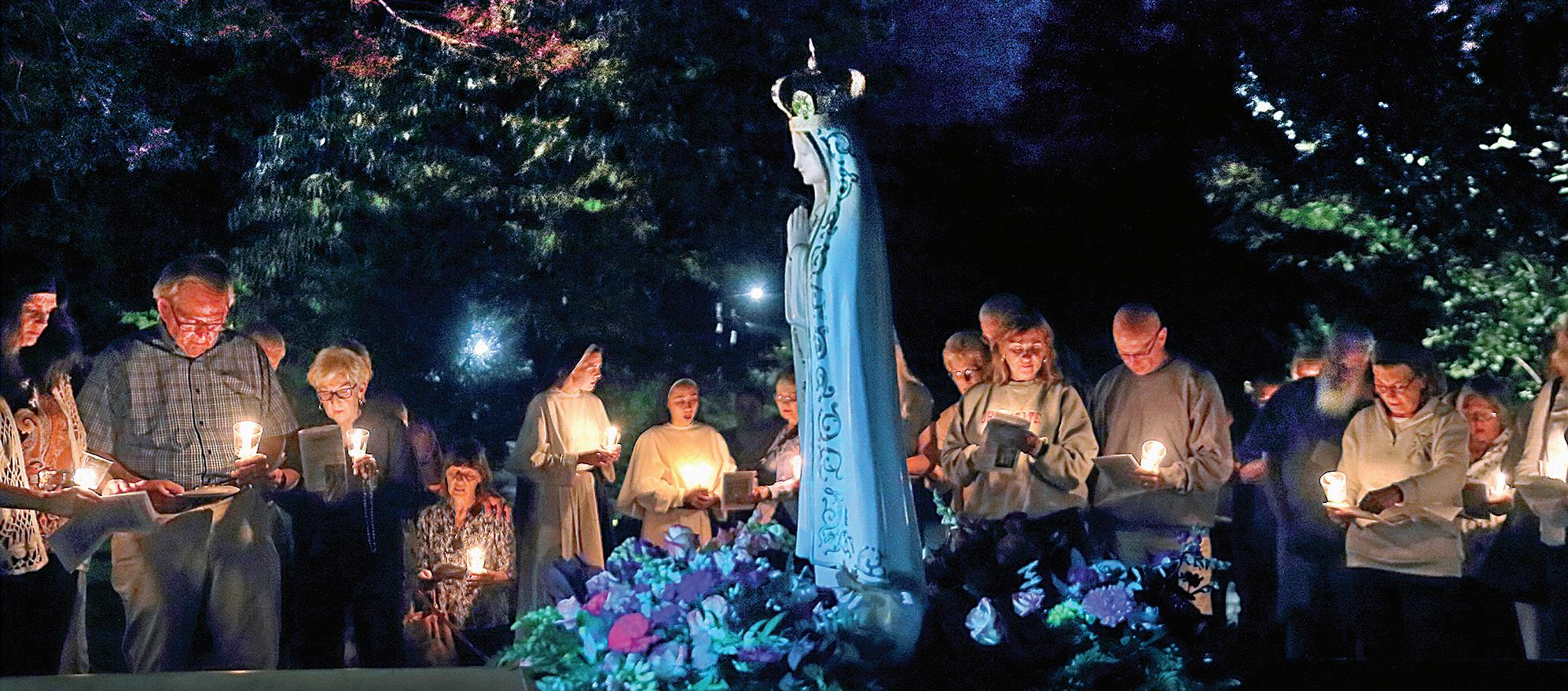
TRYON — St. John the Baptist Church held its sixth Fatima procession Oct. 13. The processions have taken place monthly since May on the anniversaries of the 1917 apparitions of Our Lady to Lucia dos Santos and her cousins, Francisco and Jacinta Marto, in Fatima. The evening began with a recounting of the Miracle of the Sun, the event on Oct. 13, 1917, during which thousands of people saw the sun appear to dance in the sky. Recitation of the rosary in English, Latin, Spanish and French followed. A candlelight procession on the church grounds was led by children strewing flower petals in front of a statue of Mary. Father Matthew Buettner concluded the evening with the recitation of the Litany of Loreto.
— Giuliana Polinari Riley
paternal concern.”
On one occasion during an audience, the pope pointed her out among the crowd and said, “She is my little girl.”
“Every time we talked, he listened attentively. He always was like a father to me,” she remembered.
Banasik continued her studies and eventually married a fellow student from
Mexico in Rome. Her children had the opportunity to grow up near the pope, seeing his constant example of humility and service.
They lived in Rome for 12 years until God called them to serve in Mexico. However, until the pope’s death in 2005, the family remained close to him.
“We had many blessings for being so close to the pope,” Banasik said. “And now he still lives in my heart as a saint. I always ask for his intercession.”
A prolife ministry of the Catholic Church, Room At The Inn provides housing and programs to single, pregnant women and single mothers with children from anywhere in North Carolina.
Licensed by NCDHHS and accredited by the Council on Accreditation, we have helped over 750 mothers and their children from throughout the state – from the mountains to the beaches on the coast.
Built on a foundation of hope, we make the Mercy of Jesus present to these families by our programs that form our four pillars of service: shelter and community housing; college and job training programs; childcare and child development services; and transportation and other support services.
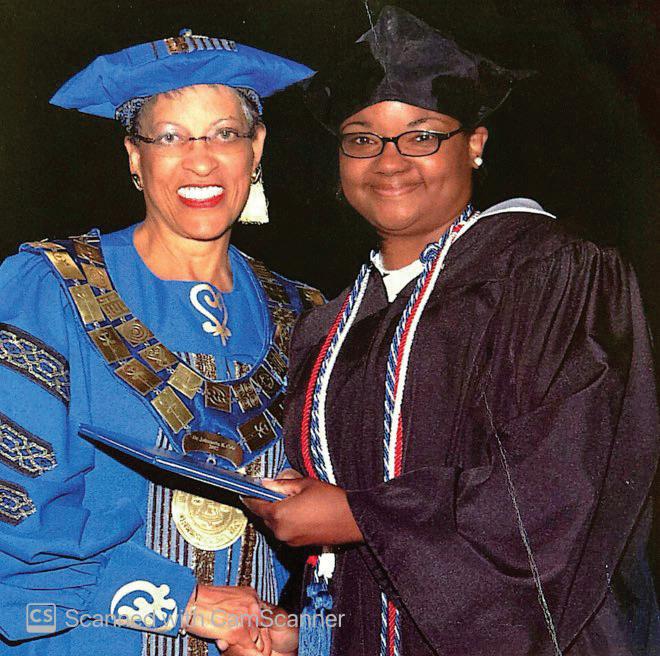
un costo estimado de 30 millones de dólares. Como explicó Aaron Ernst, gerente de proyecto sénior de Blum Construction, la empresa contratista con sede en Carolina del Norte, “no es solo un edificio, es una obra de arte viva. Cada ladrillo, cada azulejo, lleva consigo un legado”.
Los diseños de bóvedas de Guastavino se pueden ver en lugares como el Carnegie Hall, Ellis Island, la Tumba de Grant y Grand Central Station en la ciudad de Nueva York, lo que le valió el apodo de “el arquitecto de Nueva York”.
En Asheville, Guastavino creó un hito arquitectónico irreemplazable, según Anne Chesky, exdirectora del Museo de Historia de Asheville y miembro de la Alianza Guastavino, un grupo dedicado a promover y preservar su legado.
Ohio-based architect William Heyer is the lead architect for the project, which would expand the church’s seating capacity from 140 to 303 and add 3,086 square feet to its current 1,891-square-foot layout. Side aisles, a choir loft and a rest room will be added, and the narthex will be enlarged. Other planned improvements include relocating the confessional to the back of the nave and enhancing accessible seating for people with disabilities.
A priest’s sacristy will be added to the current sacristy, and a portico and patio will be added to the church entrance. Space will
“El edificio representa una época anterior de la historia de Asheville, y está anclado allí, en el centro de la ciudad”, dijo Chesky. Desde su finalización en 1909, la basílica ha sido un testigo importante de la fe en una región con pocos católicos.
“Estamos justo en el centro, lo cual es una gran presencia evangelizadora”, dijo el monseñor Roger Arnsparger, párroco y rector de San Lorenzo. “A veces, los visitantes —especialmente los jóvenes— vienen a verla y terminan preguntando cómo pueden hacerse católicos”.
Everist contó a los presentes que se encontró con un grupo de visitantes de Alemania.
“La gente entra y queda asombrada. Puedes ver cómo se les cae la mandíbula. Se quedan en silencio”, dijo. “Miras hacia esa cúpula y sientes la presencia de Dios. No solo es un tesoro arquitectónico increíble, sino también una manera asombrosa de difundir la fe católica”.
be reserved for a future outdoor plaza and grounds improvements.
In a letter to the parish, Father Allen recalled an incident from Oct. 5, 2024, a week after Helene tore through the Valley. A man named Luke was visiting Grovemont Park, a destination for throngs of people seeking hurricane assistance, comfort, and hope. Luke heard the crowd erupt loudly. He asked, “why are you cheering?” The crowd said: “the bells of Saint Margaret Mary are ringing again!”
“Our bells were signs of hope for the community, and this moment reminds us that they always have been a sign of hope,” Father Allen wrote. “Our Bells of Hope Capital Campaign is our opportunity to ensure that these bells continue to ring for all generations to come.”
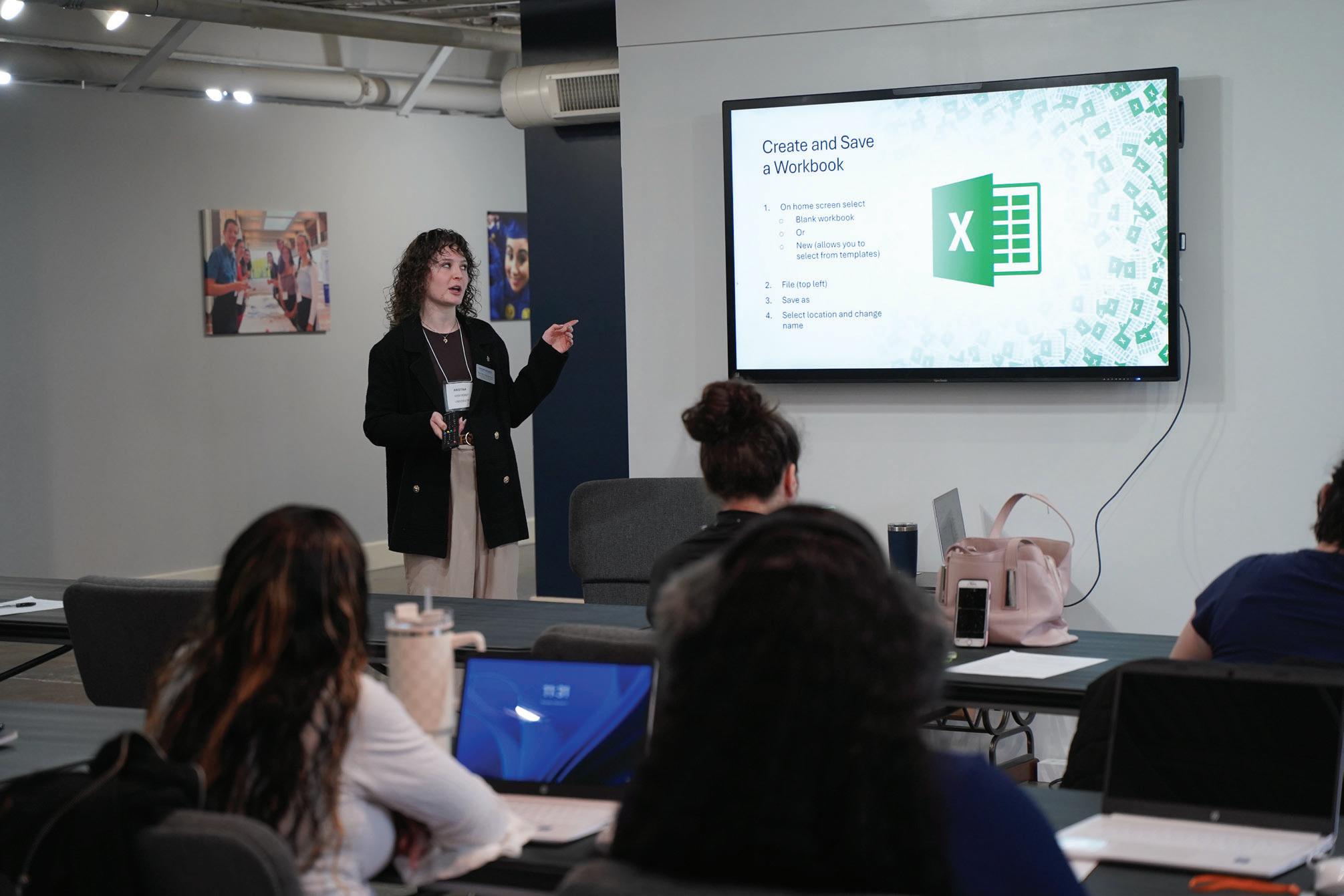
To expand the funding for this life-a rming work, we are conducting a ra e.
